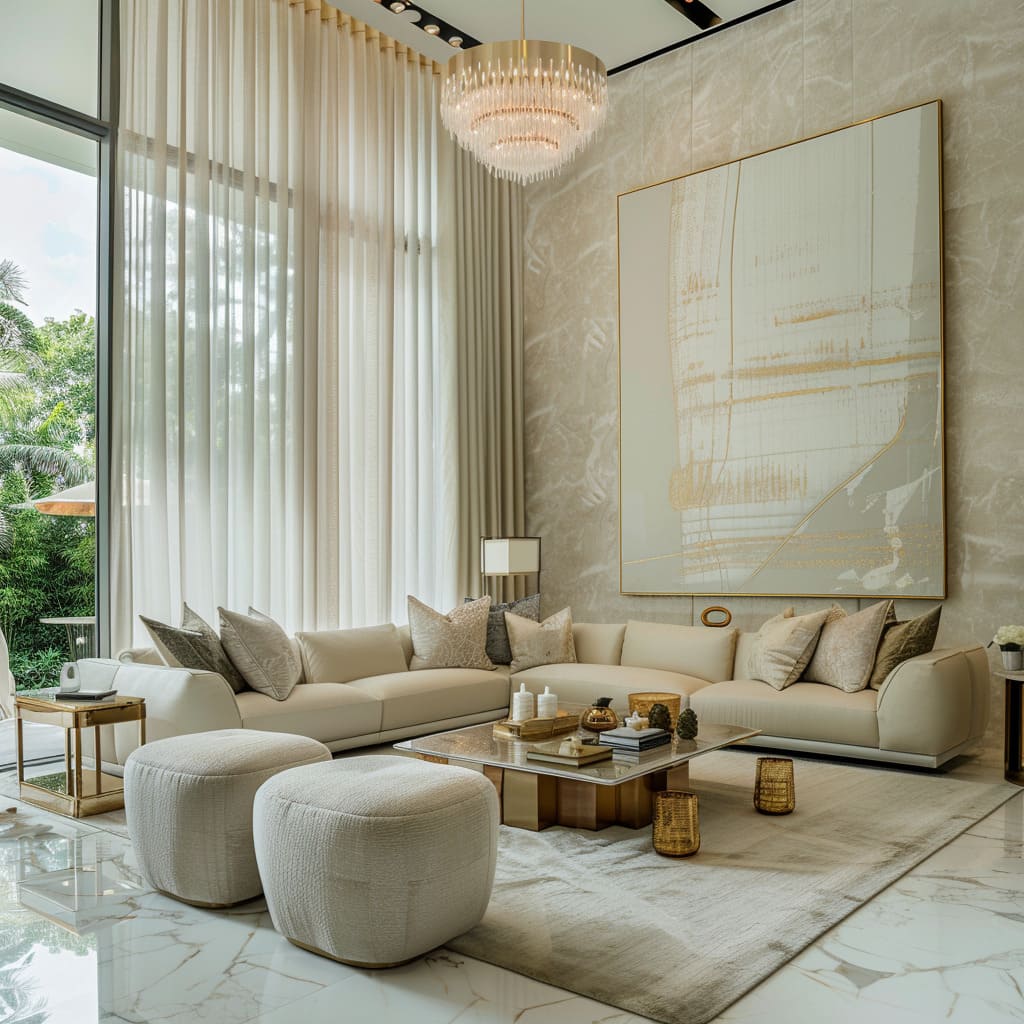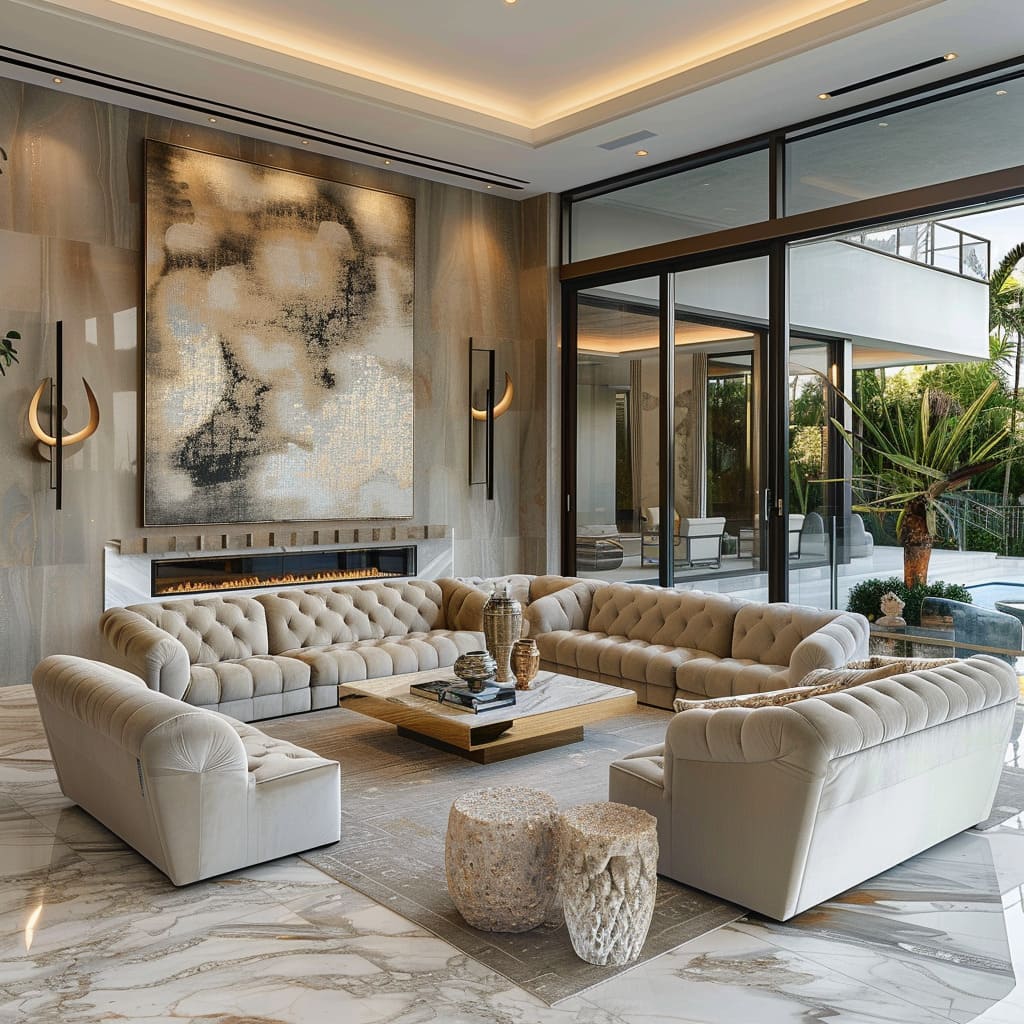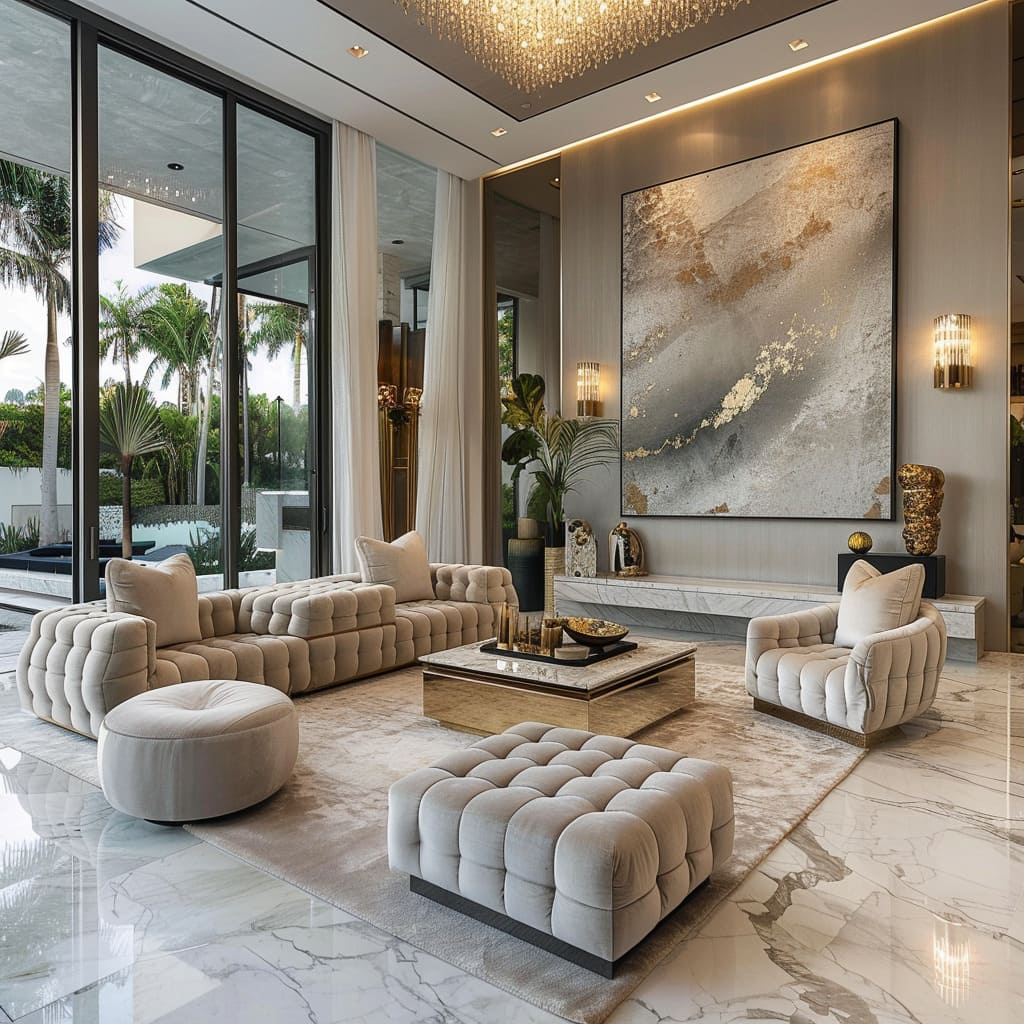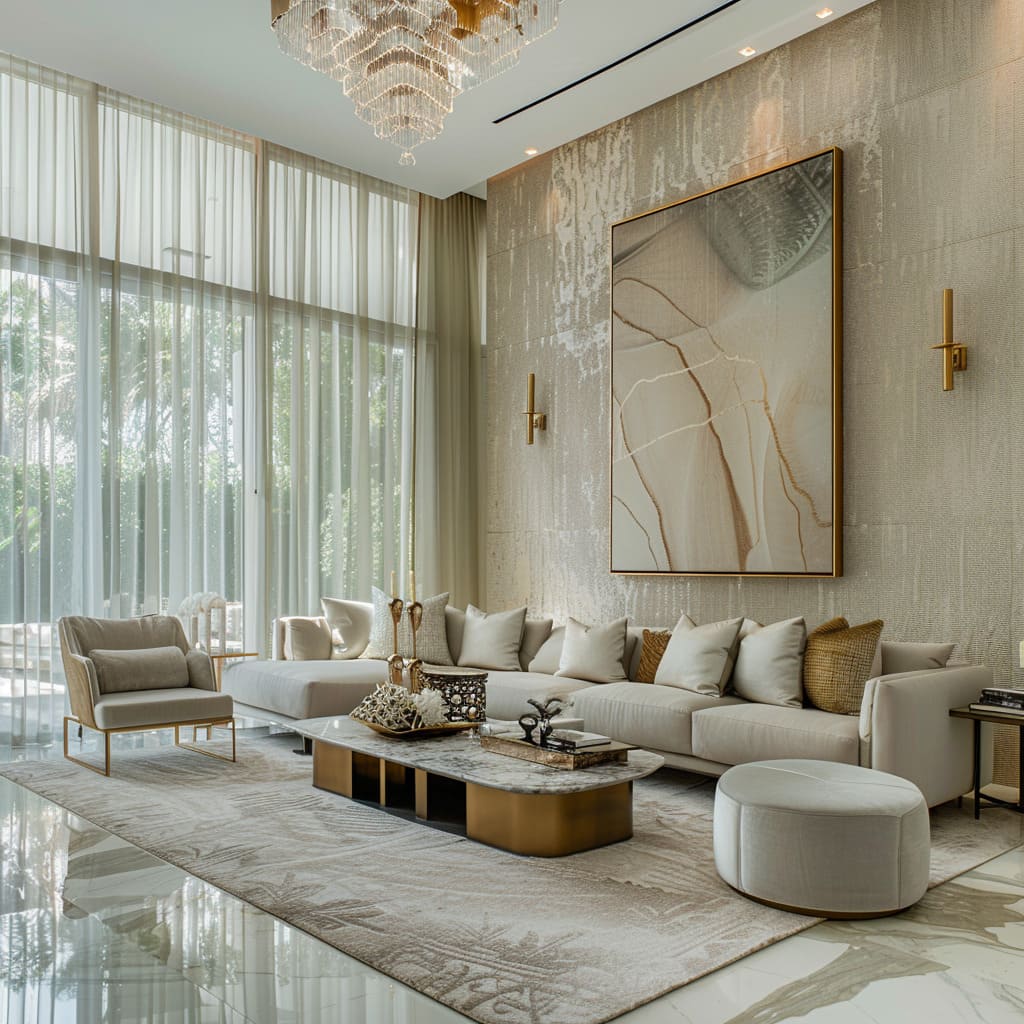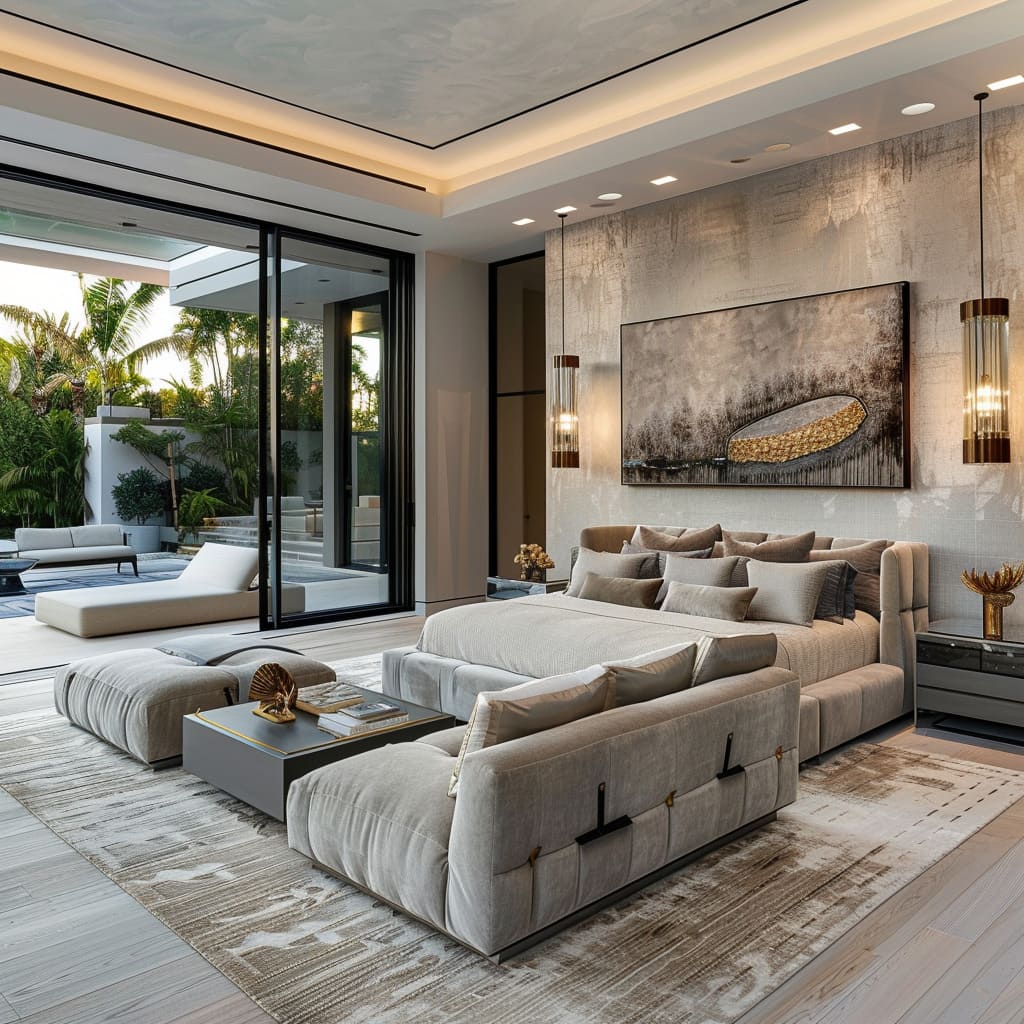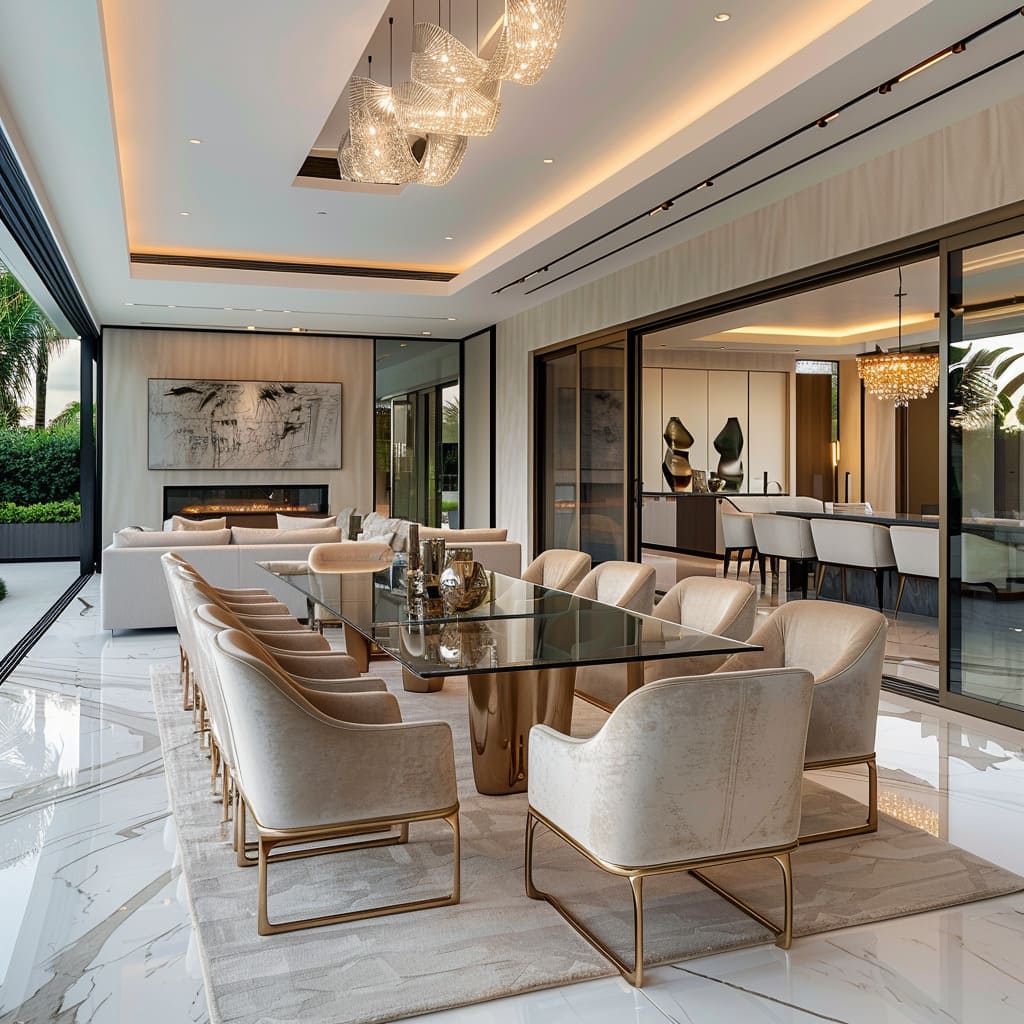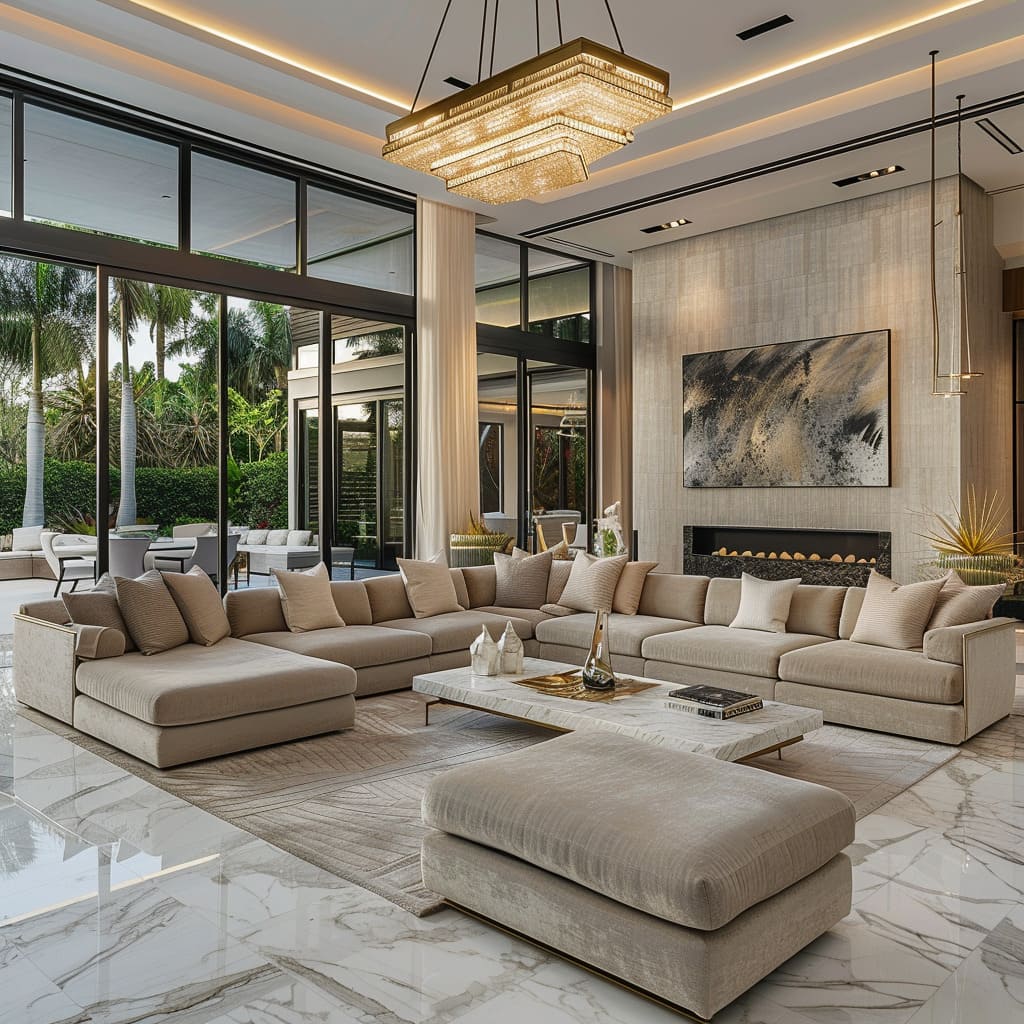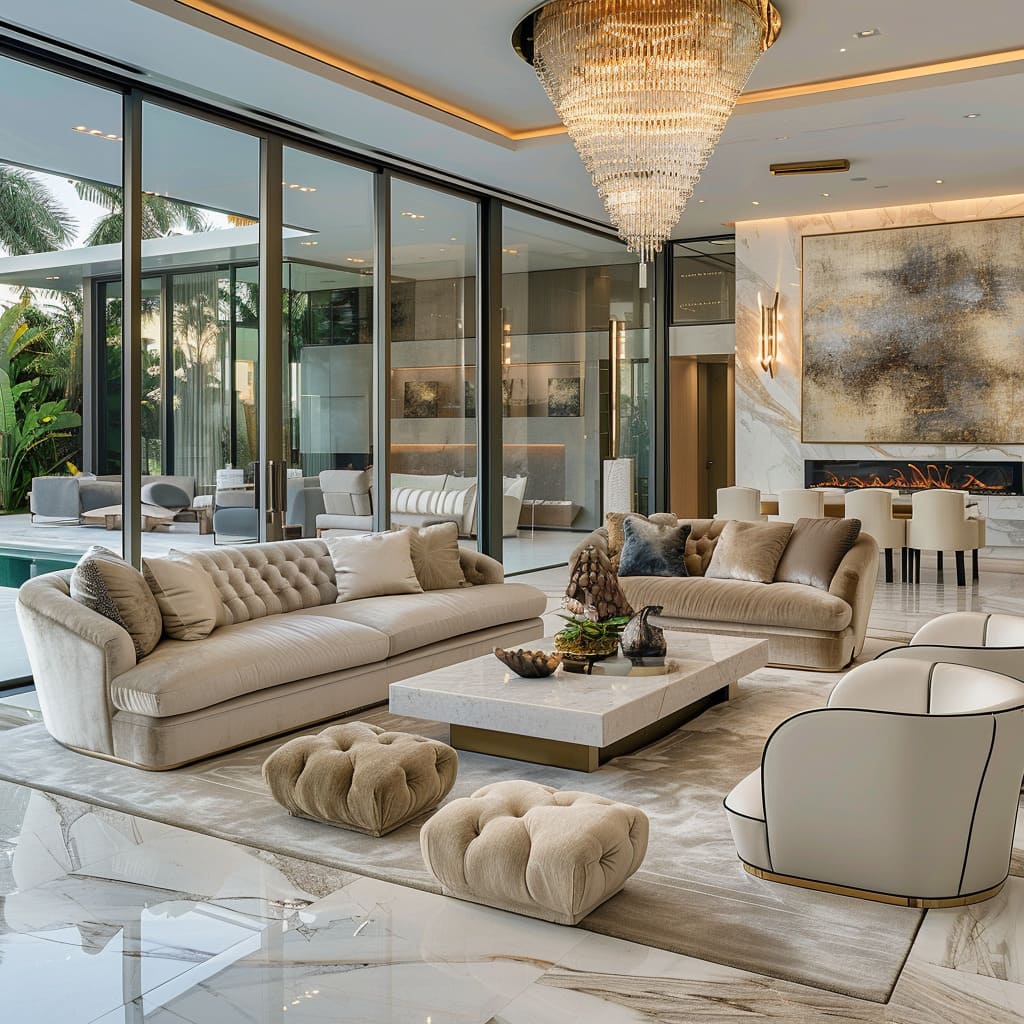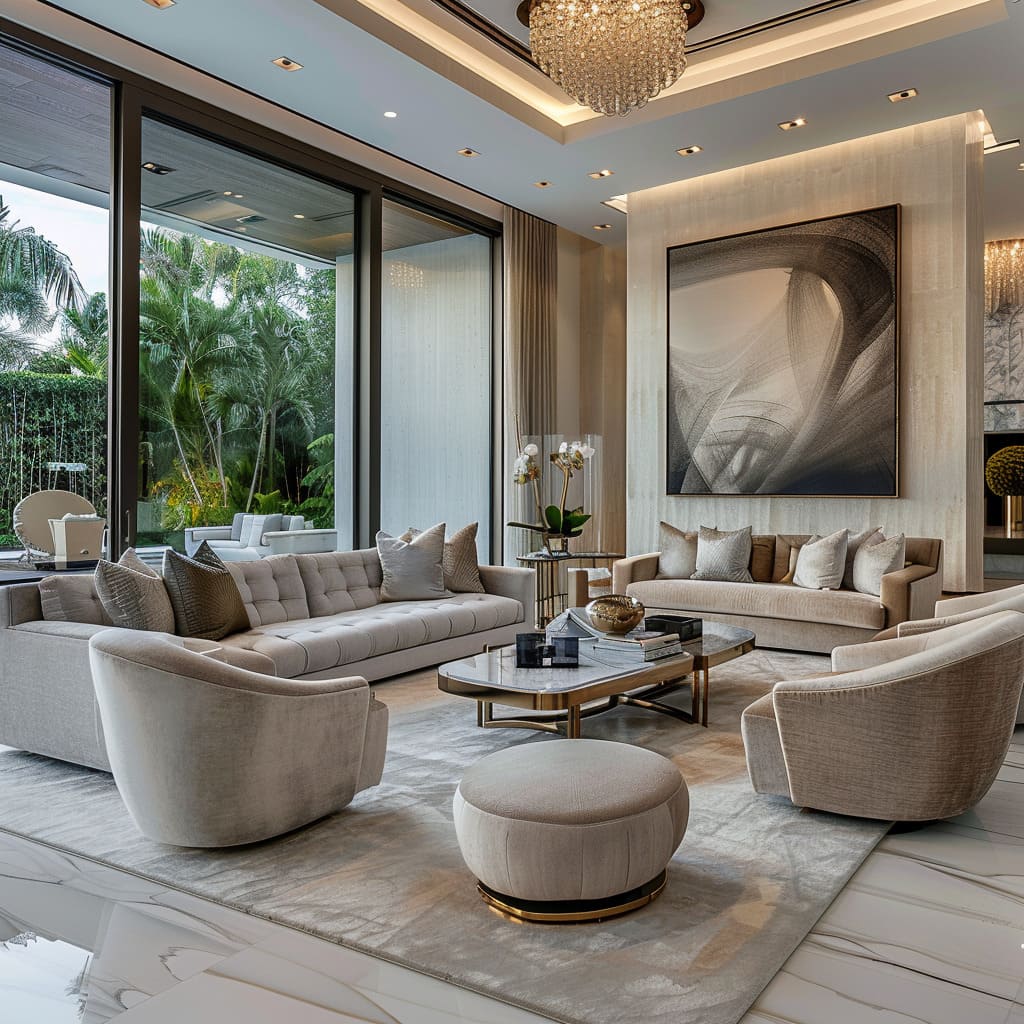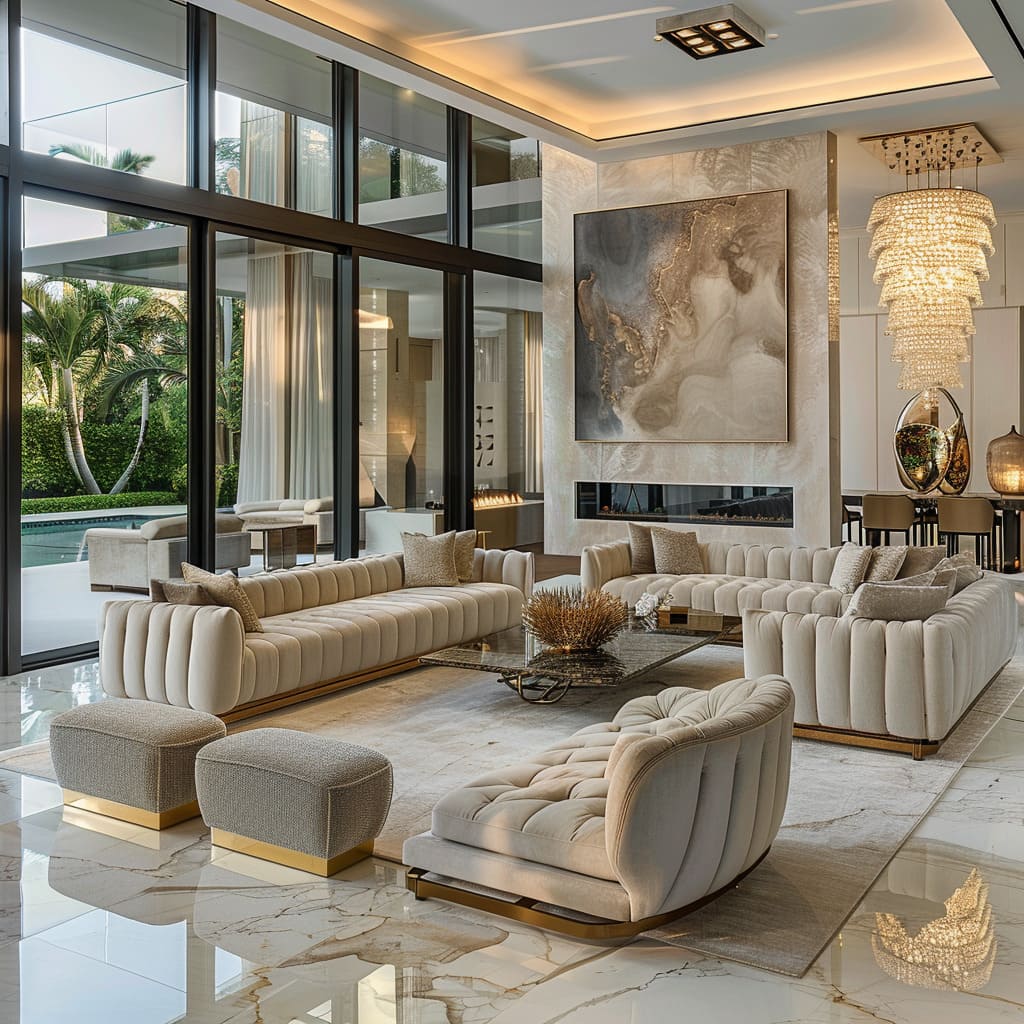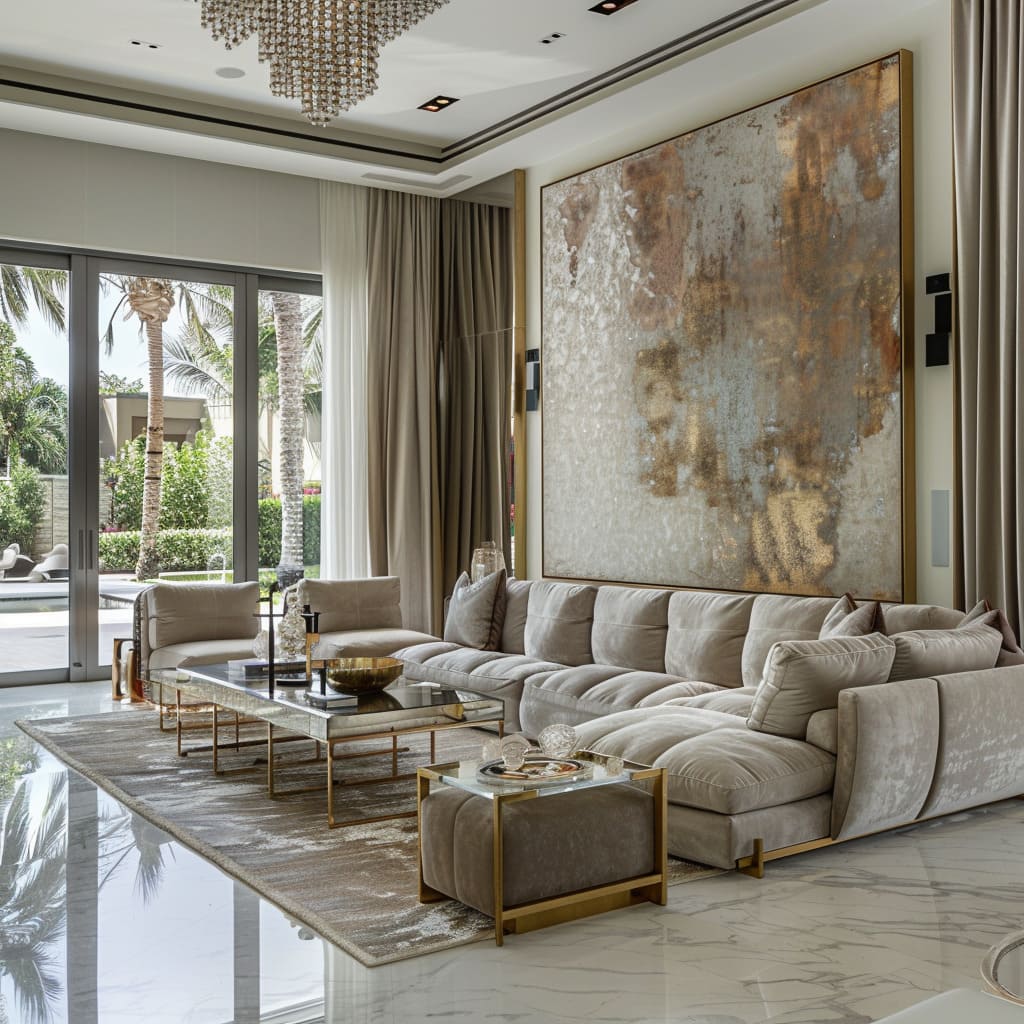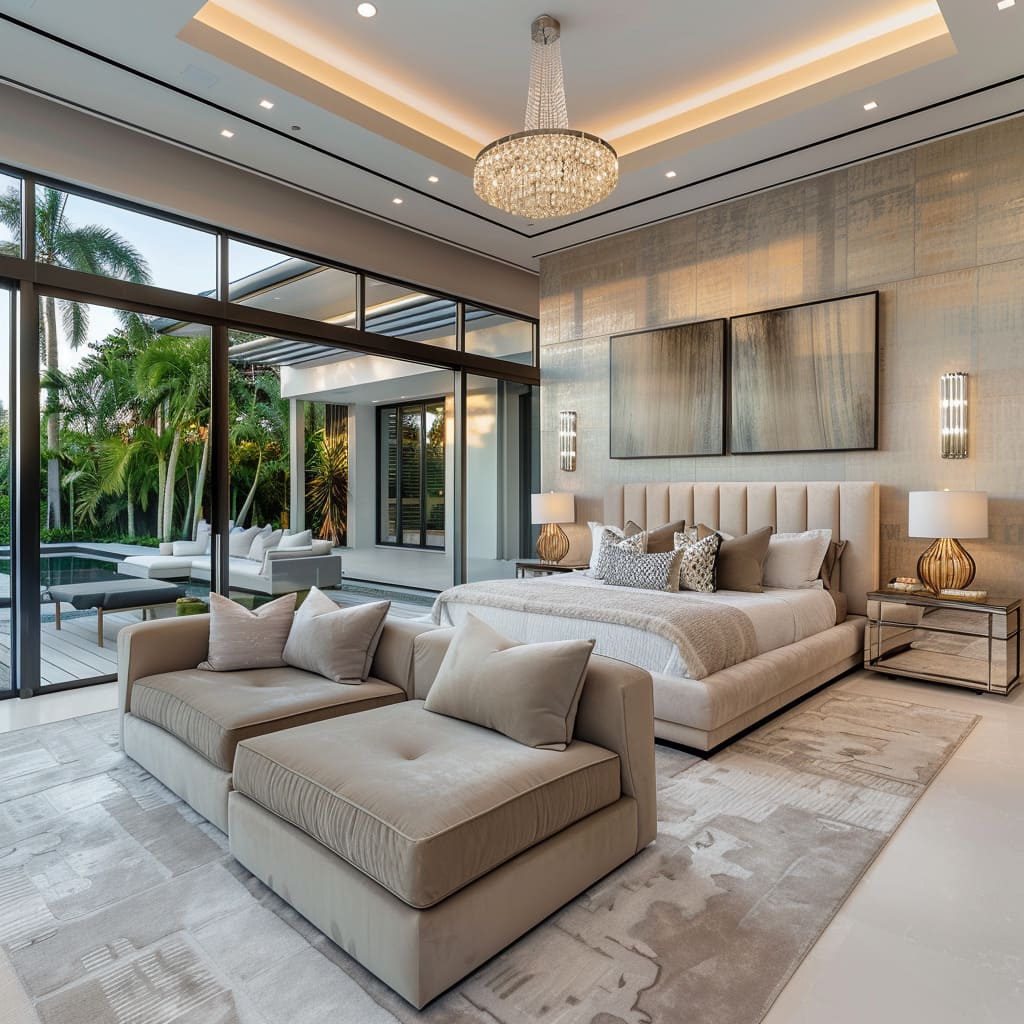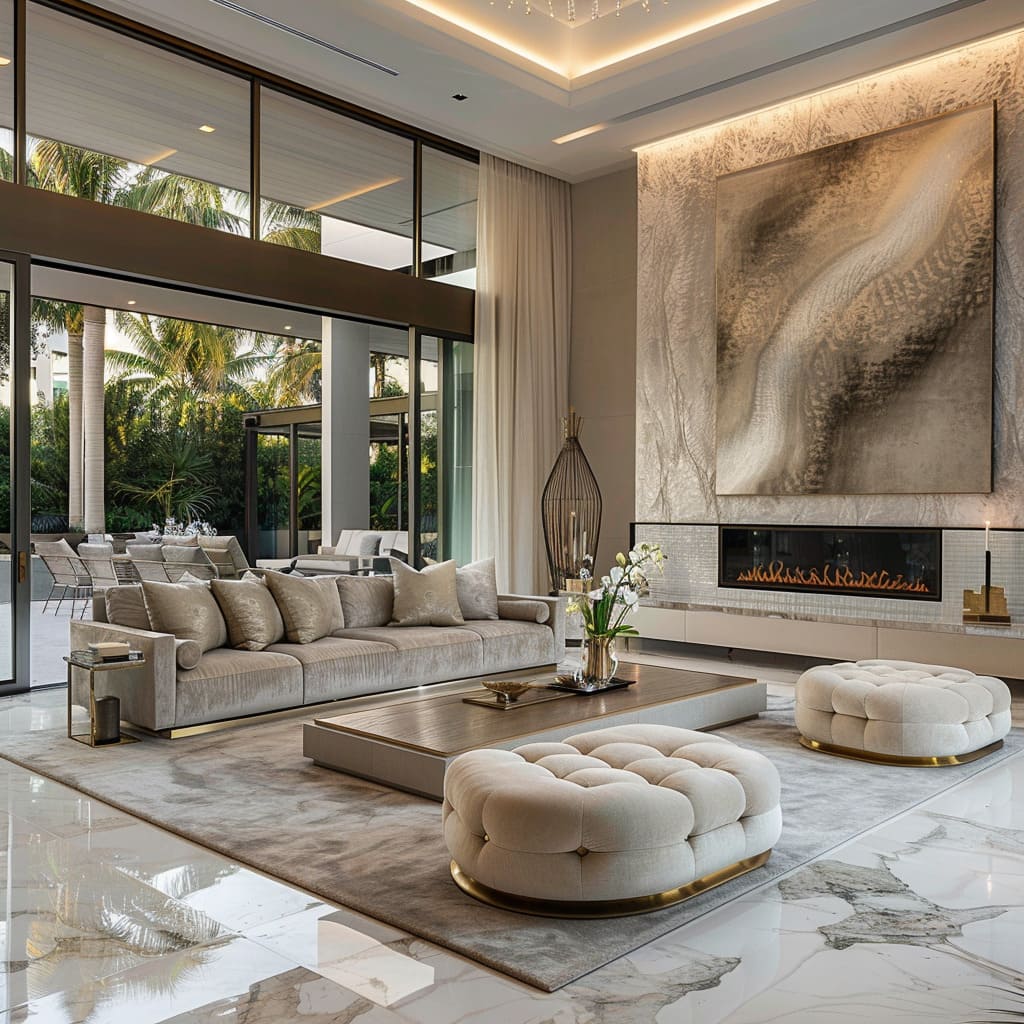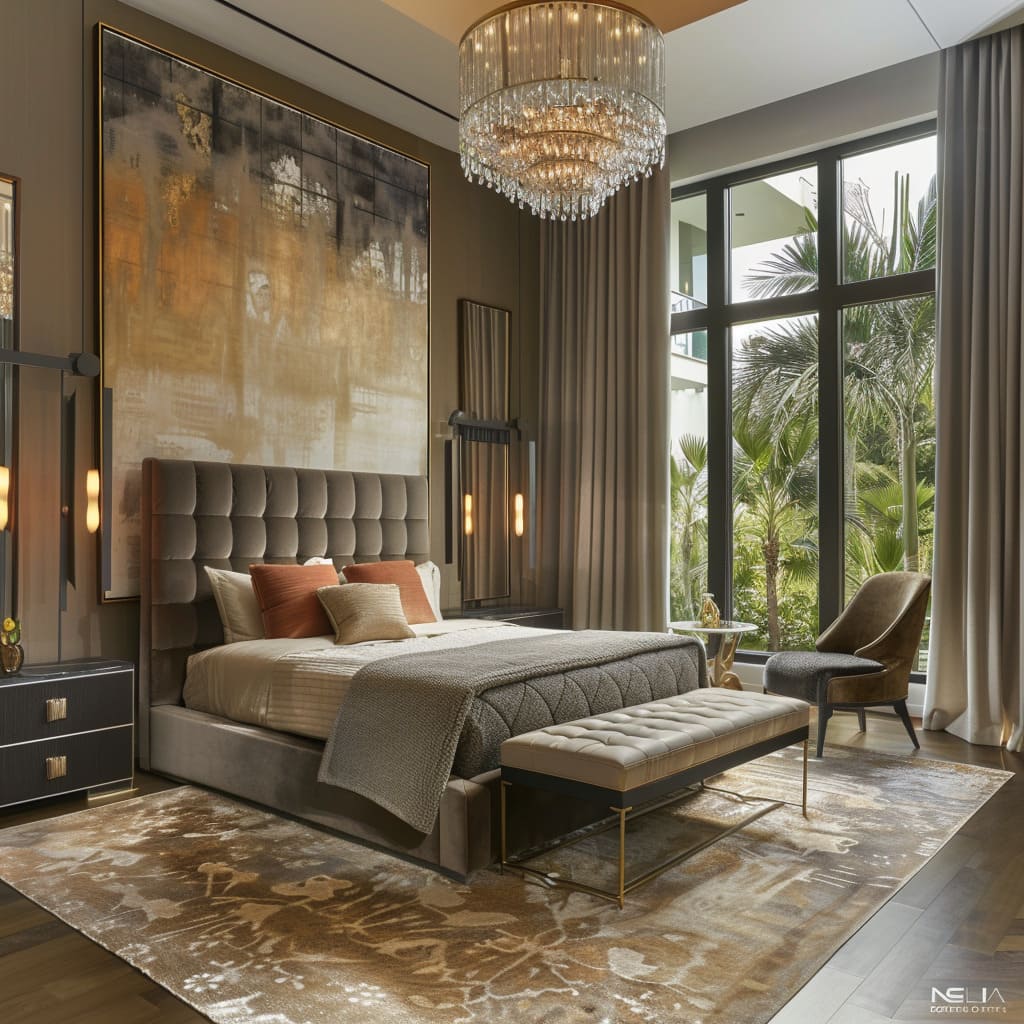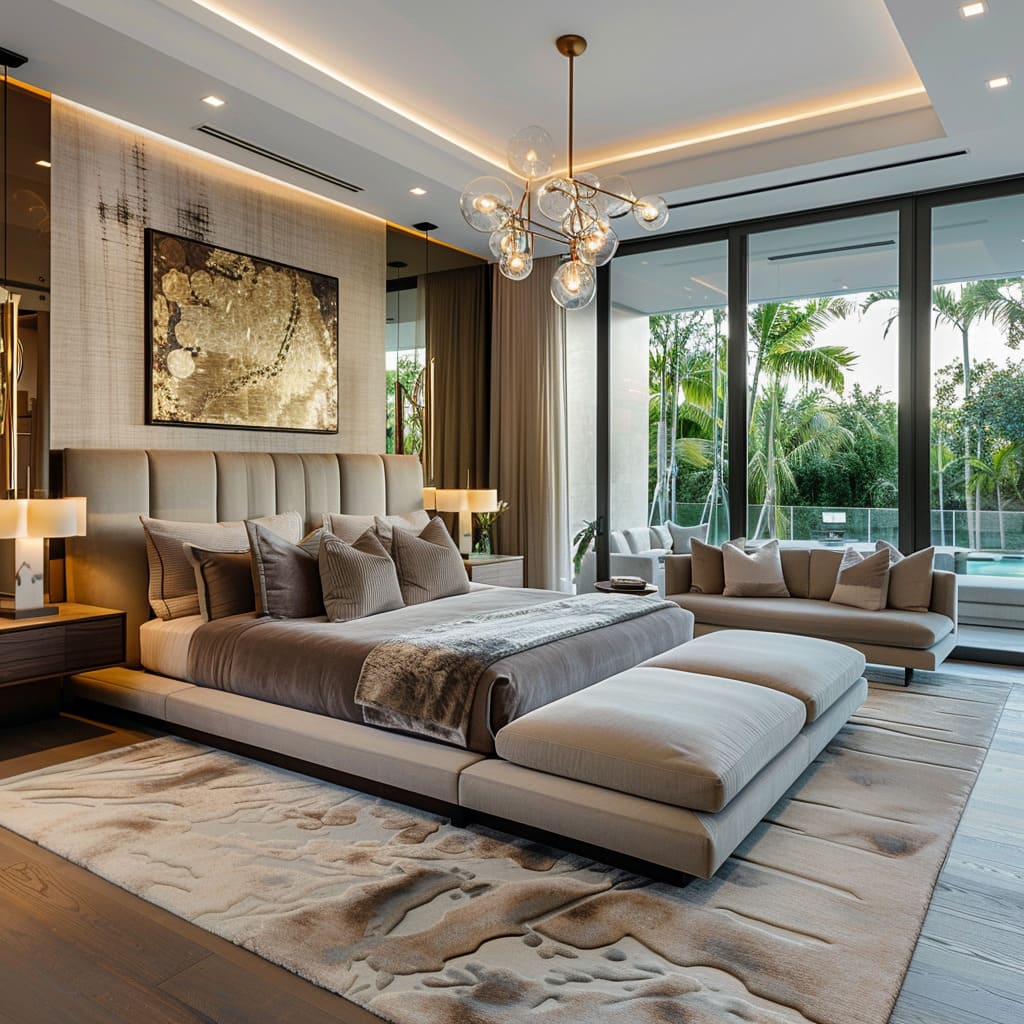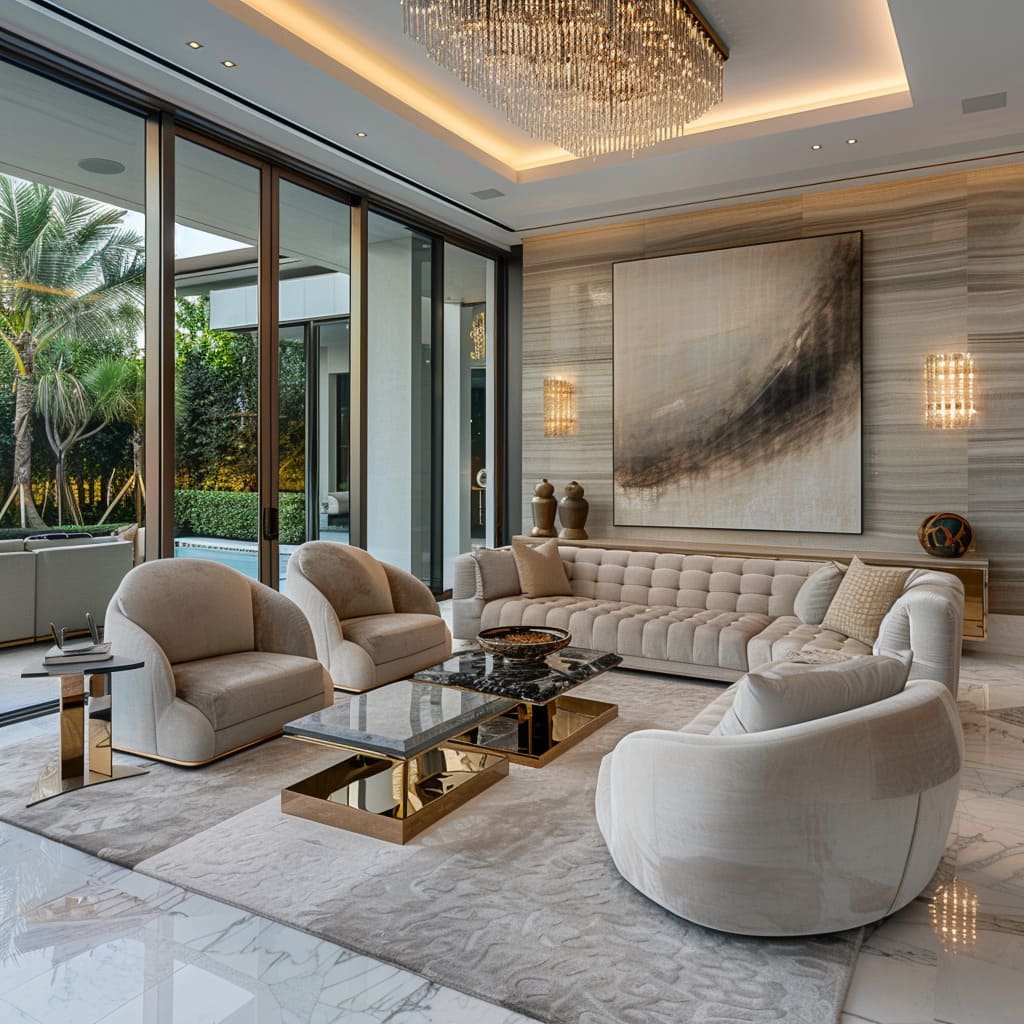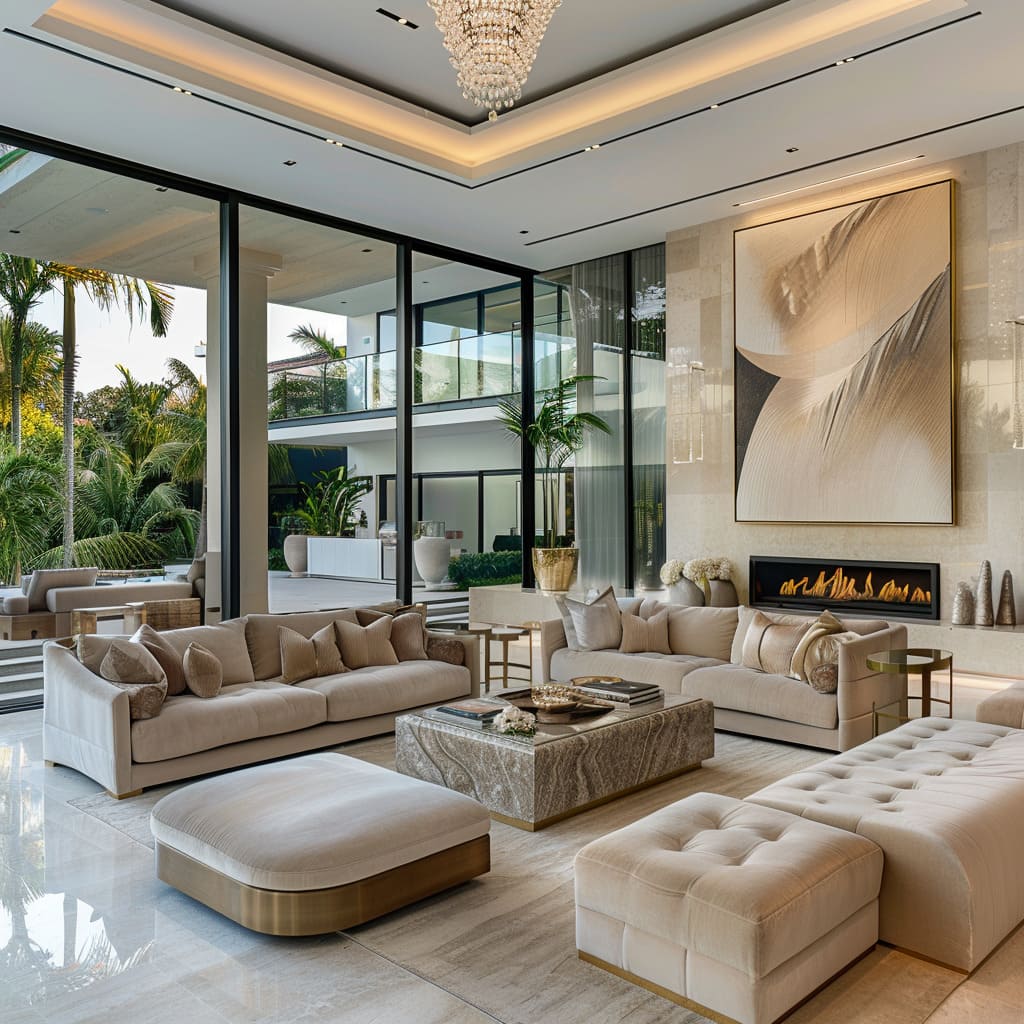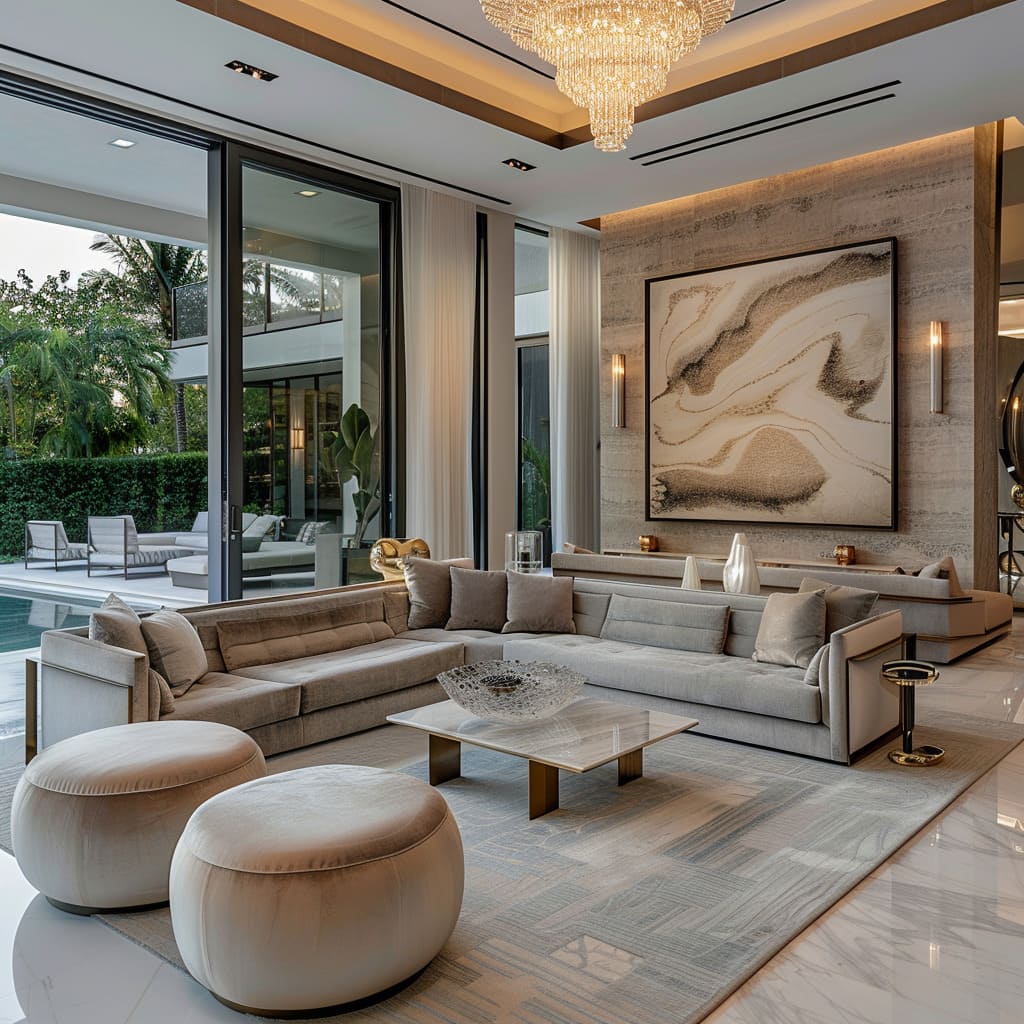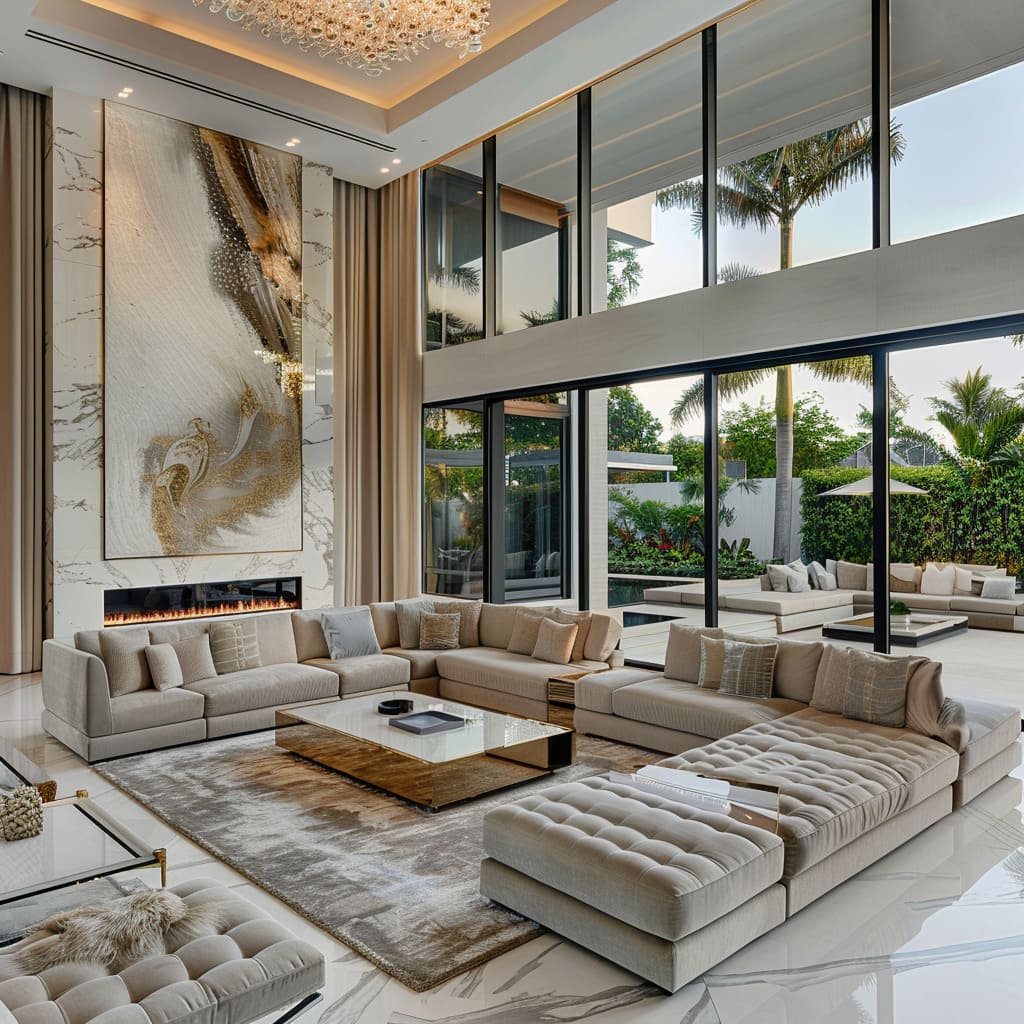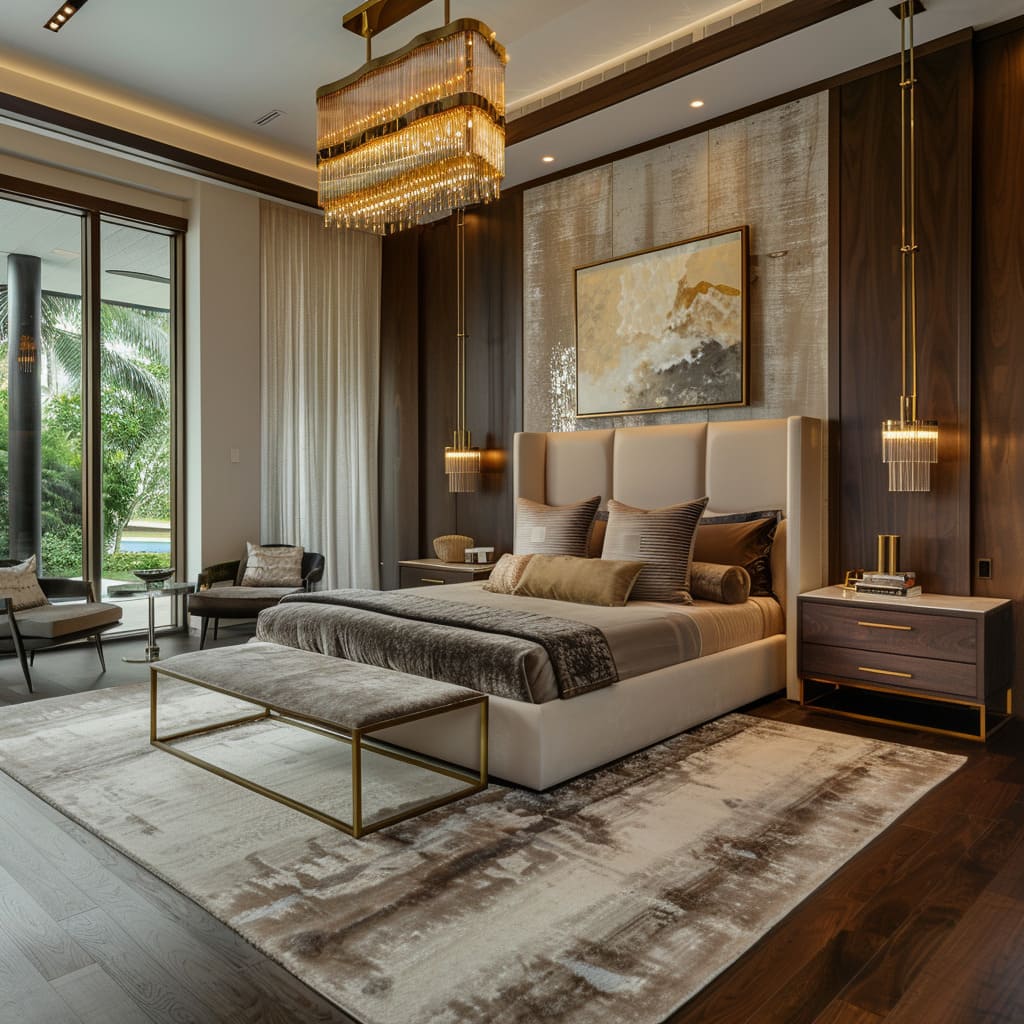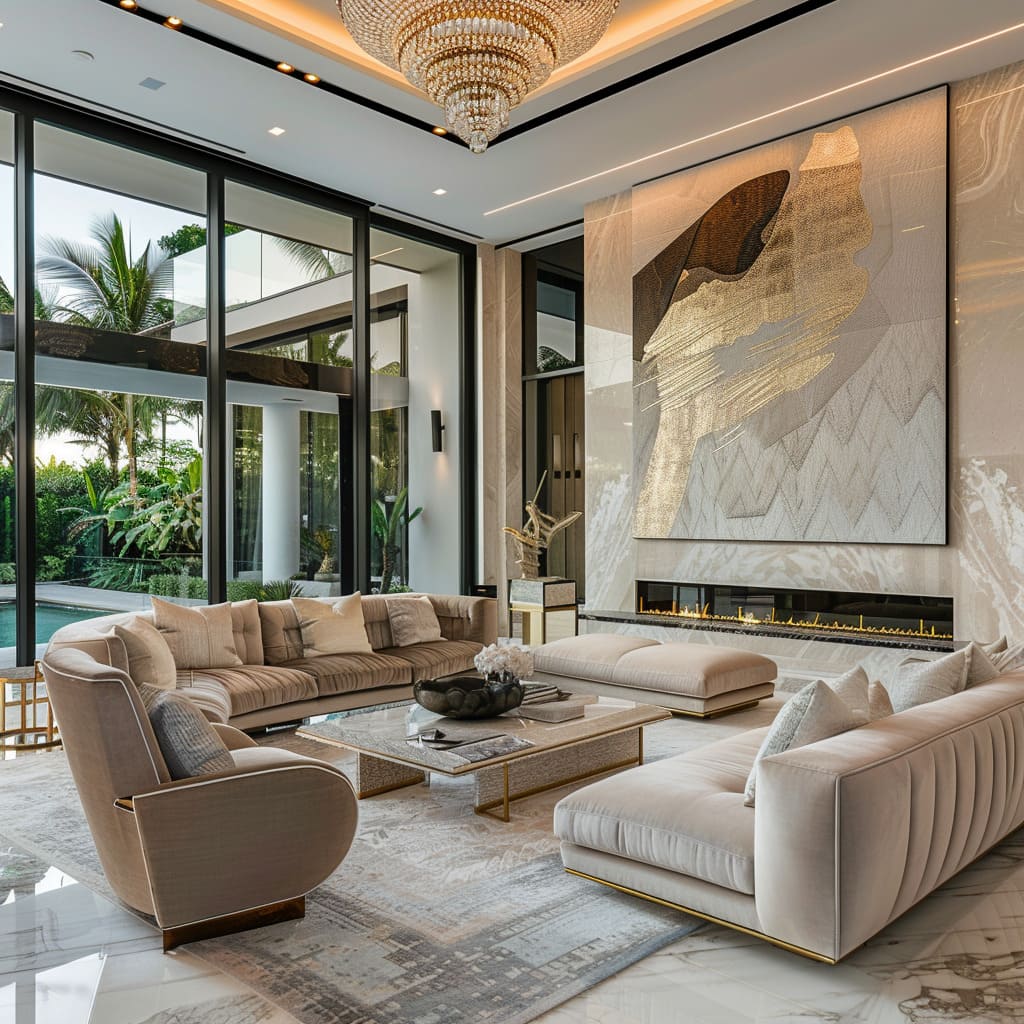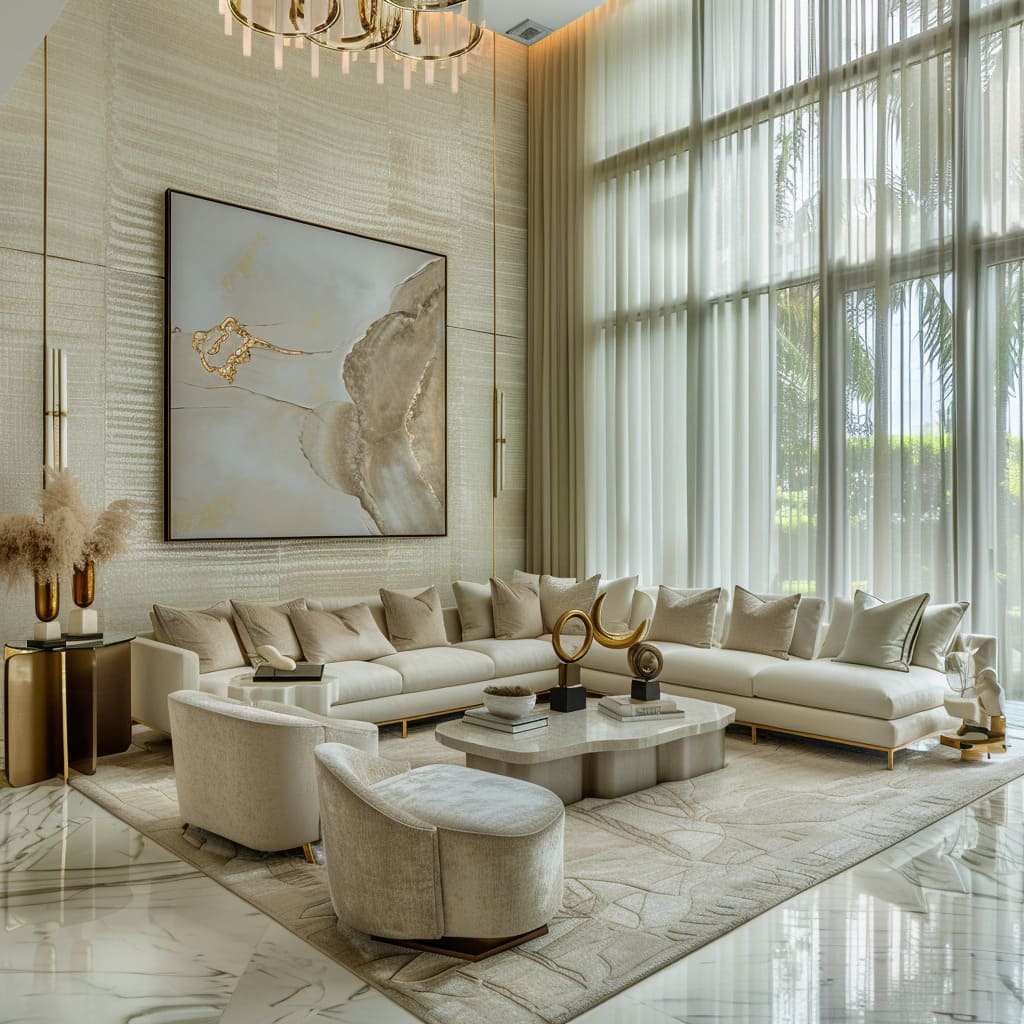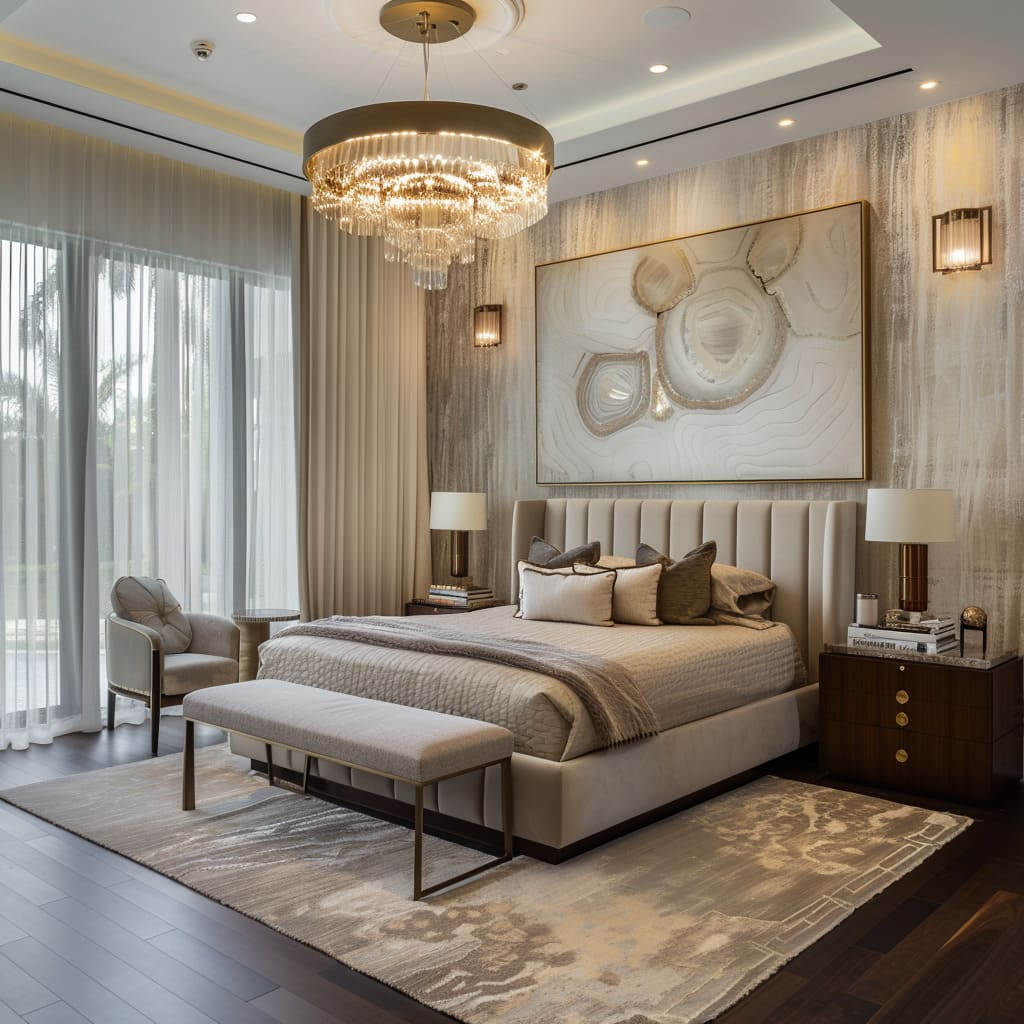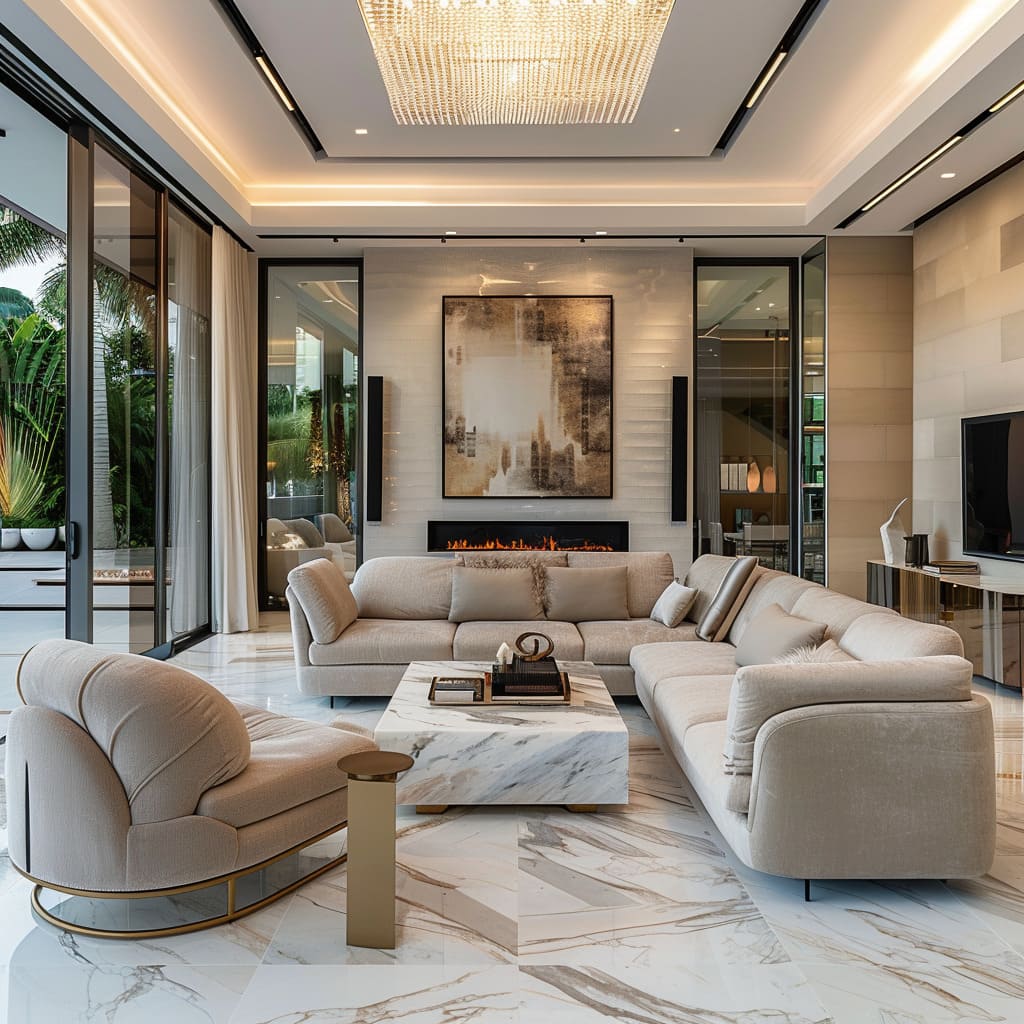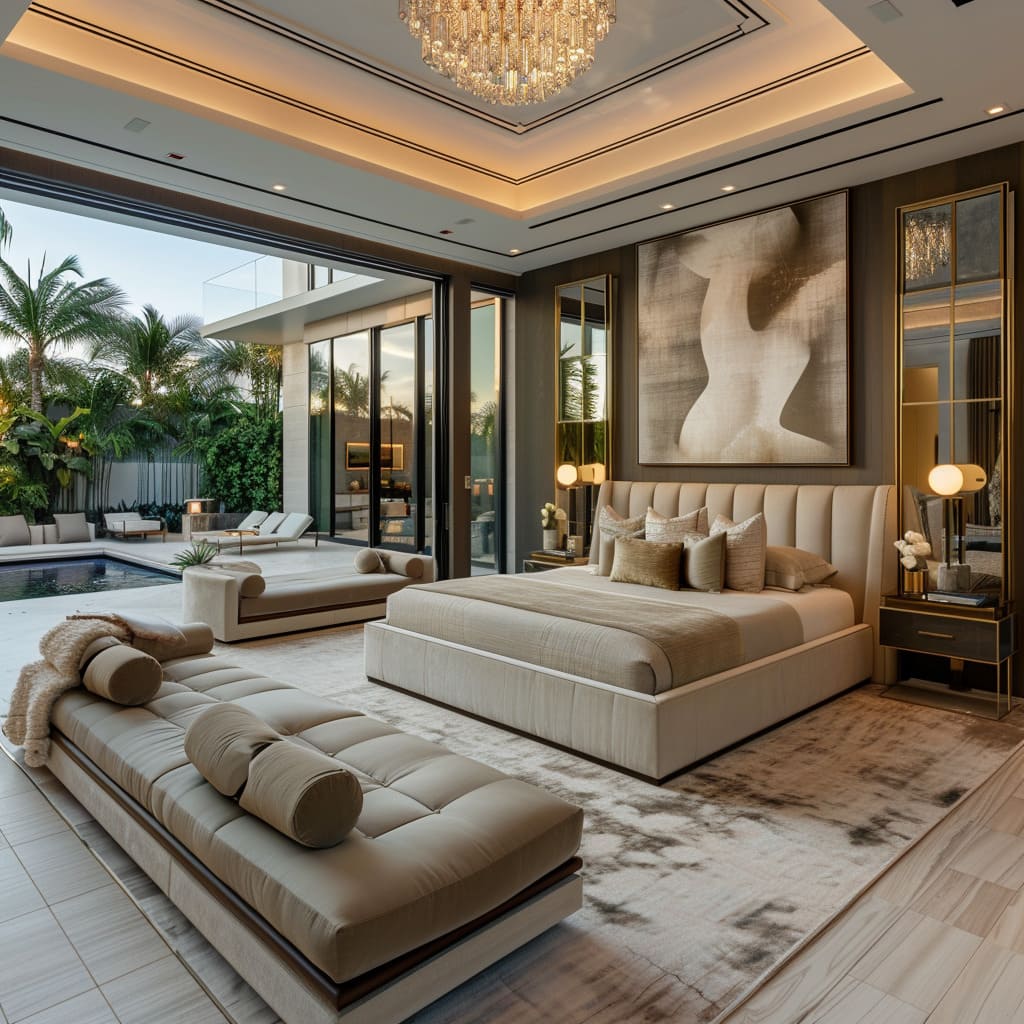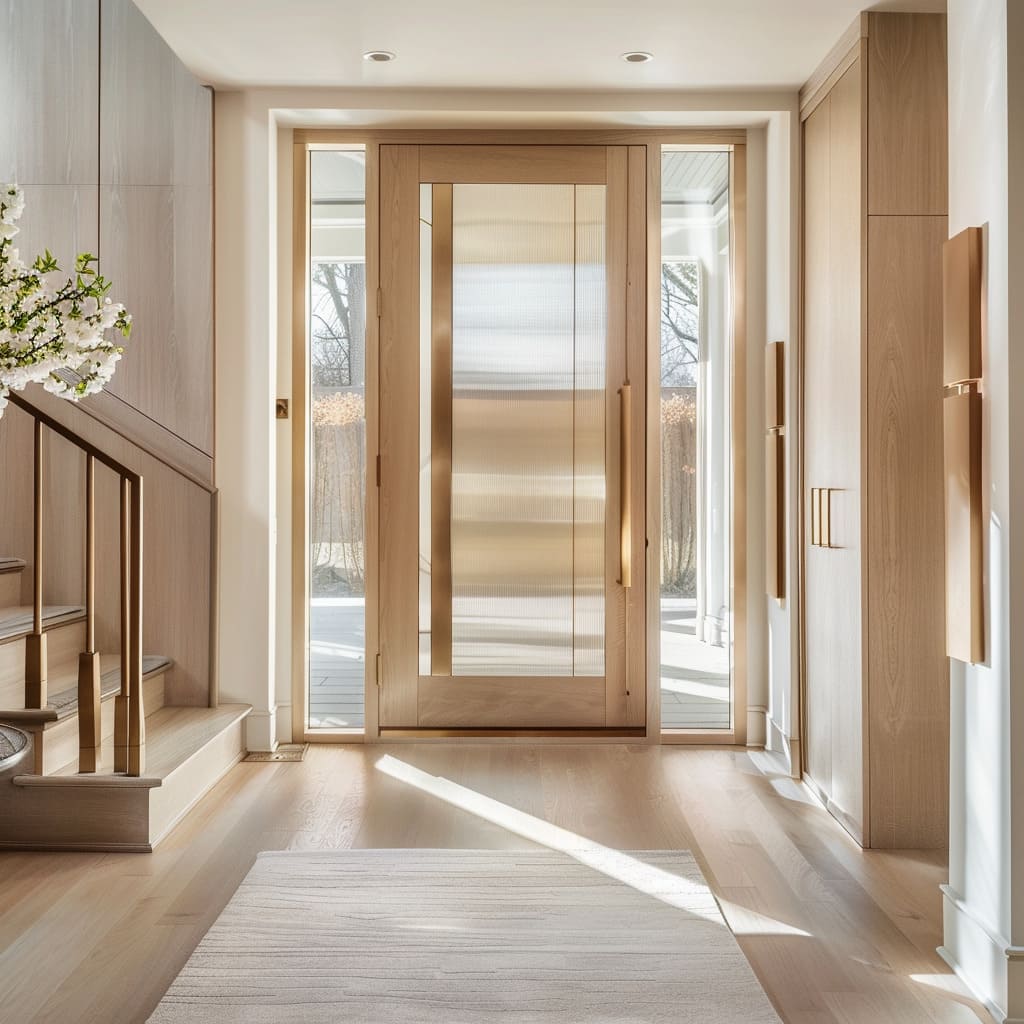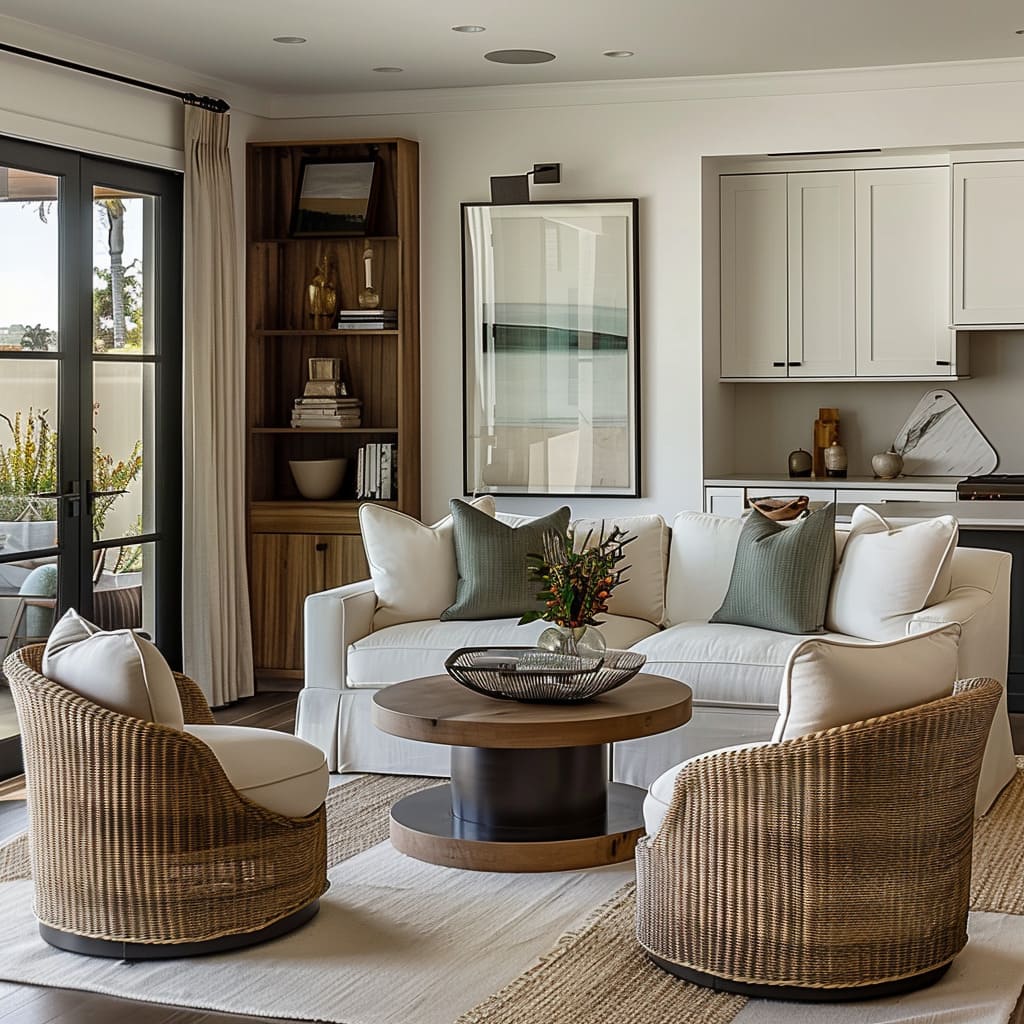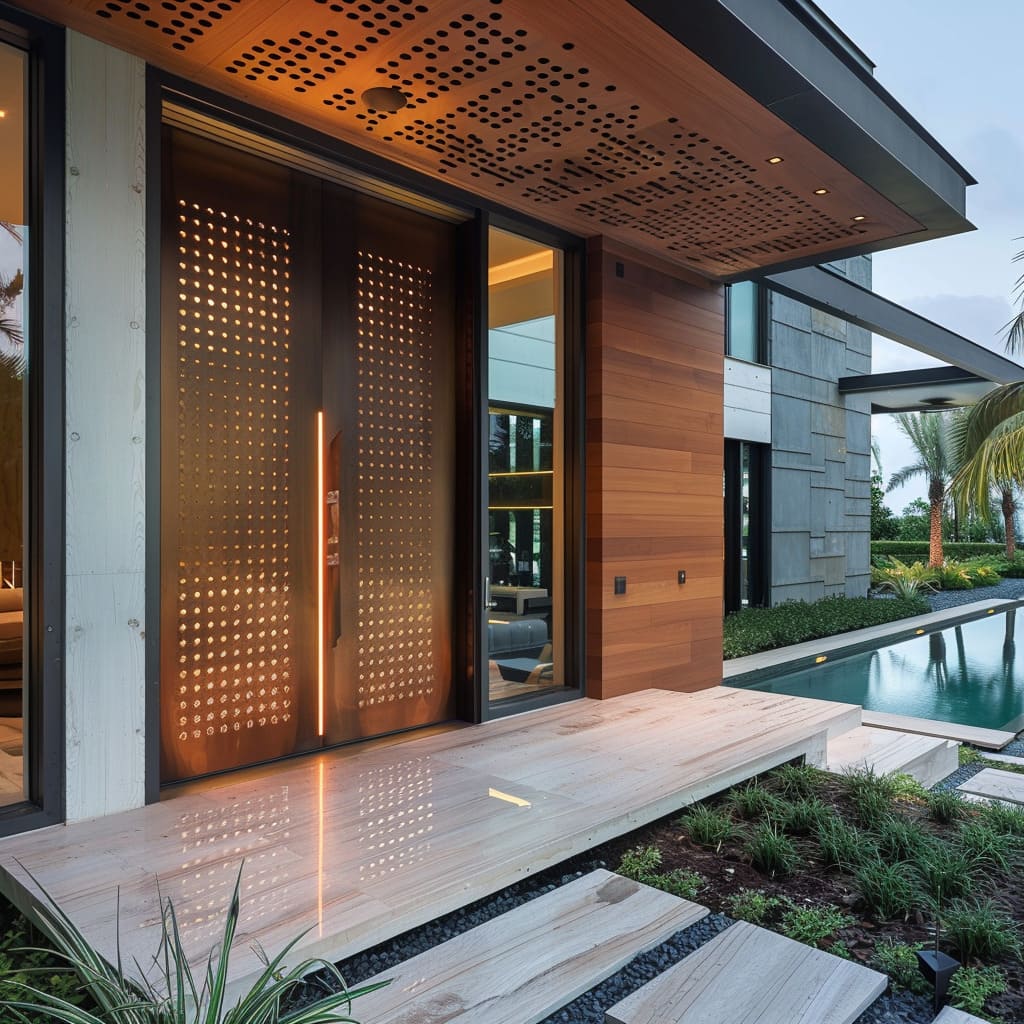Modern luxury homes are a showcase of refined taste, where every detail contributes to the overall aesthetic and feel of the space. The art and decorative elements chosen for these interiors play a crucial role in defining the personality and character of the home.
These elements, carefully selected and placed, bring a space to life, offering visual interest, creating focal points, and enhancing the comfort and beauty of the environment. In this article, we will explore the different ways art and decorative pieces are used in modern luxury homes to create an atmosphere of understated opulence and timeless appeal
The Role of Art in Modern Luxury Interiors
Art serves as more than just a visual attraction in a luxury home; it is an integral part of the design language. One of the primary functions of art in these interiors is to create a focal point that draws attention and anchors the room.
In large, open spaces like living rooms and master bedrooms, oversized abstract art pieces are often used to set the tone for the entire room. These works of art are carefully chosen not only for their visual appeal but also for how they interact with the room’s color palette and design elements. For instance, a large, abstract painting above a bed or sofa not only fills the space but also ties together the various colors and textures in the room.
This integration of art with the room’s overall design is essential in creating a cohesive and harmonious space. The artwork reflects the room’s color scheme, often incorporating subtle shades of gold, taupe, or neutrals that complement the surrounding décor.
In addition to serving as a focal point, art also enhances the architectural features of a space. It can be used to highlight a feature wall, draw attention to a textured surface, or even balance out the proportions of a room.
For example, placing a tall, vertical piece of art on a marble wall can accentuate the height of the room, while also adding depth and interest to the space. Art in luxury interiors also plays a crucial role in complementing or contrasting with the room’s color palette.
By carefully selecting pieces that either harmonize with the existing tones or introduce a new accent color, designers can create a more dynamic and engaging environment. A well-chosen piece of art can make a subtle statement, bringing together the room’s elements in a way that feels natural and unforced.
How can art in modern luxury interiors be used to reflect the personal tastes or cultural background of the homeowner, while still maintaining the overall cohesion of the room’s design?
Art in modern luxury interiors can be a powerful way to reflect the personal tastes or cultural background of the homeowner while maintaining overall design cohesion through several strategies: Curating culturally significant pieces can infuse interiors with elements that resonate with heritage or personal history. This might include traditional artworks, artifacts, or modern interpretations of cultural themes.
To ensure cohesion, designers can select pieces that match or complement the room’s color palette and style. For instance, a vibrant piece of cultural art can be paired with neutral or complementary tones in the surrounding decor, allowing the artwork to stand out while still blending seamlessly with the overall design
Incorporating personal preferences through style and medium allows homeowners to reflect their individual taste, whether that be abstract, figurative, minimalist, or something else entirely. The key to maintaining cohesion lies in selecting pieces that align with the room’s design language. For example, if the interior has a modern, minimalist aesthetic, choosing contemporary abstract art with clean lines and a muted color palette can reflect the homeowner’s tastes while ensuring that the artwork enhances rather than disrupts the room’s overall look.
Using art to create a narrative can tell a story that reflects the homeowner’s journey or values, creating a narrative thread throughout the home. This could involve selecting a series of works by the same artist or works that share a common theme, creating a sense of continuity.
Designers can integrate these narrative elements by carefully placing artworks in locations that naturally draw attention, such as entryways, feature walls, or above key pieces of furniture. The narrative created by the art can be further supported by complementary decor elements, such as textiles, lighting, and furniture that echo the themes or colors found in the artwork.
Customizing art to fit the space allows for the reflection of personal or cultural identity in a way that is tailored to the room’s design. This could involve working with artists to create pieces that incorporate specific cultural motifs, colors, or symbols that are meaningful to the homeowner.
Custom pieces can be designed to match the scale, color palette, and style of the room, ensuring that the art feels like a natural extension of the interior design
Blending traditional and modern elements is another effective approach. For homeowners who want to incorporate traditional cultural art into a modern luxury interior, designers can create a blend by juxtaposing traditional art with contemporary furniture and decor. This can be done by using modern frames, minimalist displays, or by placing traditional art in a room with a modern aesthetic, allowing the art to stand out while contributing to a rich, layered interior that honors both the past and the present.
By thoughtfully integrating art that reflects the homeowner’s tastes and cultural background, while carefully considering scale, color, and placement, designers can create spaces that are not only cohesive and visually harmonious but also deeply personal and meaningful.
In what ways can the choice of art in a luxury interior affect the mood or emotional response of those who inhabit or visit the space, and how can this be strategically employed by designers?
The choice of art in a luxury interior can significantly influence the mood and emotional response of those who inhabit or visit the space. This impact can be strategically employed by designers to create a desired atmosphere, evoke specific feelings, and enhance the overall experience of the space.
Setting the Tone of the Room: Art can be used to establish the overall tone of a room, whether it’s calm, energizing, dramatic, or uplifting. For instance, soft, abstract pieces with muted colors can create a sense of tranquility and relaxation, making them ideal for spaces like bedrooms or living rooms where comfort is key.
On the other hand, bold, dynamic artworks with vibrant colors and strong lines can inject energy and excitement into a space, perfect for areas like dining rooms or entertainment spaces
Eliciting Emotional Connections: Art has the power to evoke deep emotional responses based on personal connections, memories, or cultural associations. For example, a serene landscape painting might evoke feelings of peace and nostalgia, reminding someone of a beloved place or time in their life.
Designers can work closely with homeowners to select art that resonates emotionally, ensuring that the space feels both personal and meaningful. Enhancing the Room’s Purpose: The choice of art can also enhance the functional purpose of a room by aligning with its intended use.
In a home office, for example, art that features inspiring themes or motivational quotes can help boost productivity and focus. In contrast, in a spa-like bathroom, soothing, nature-inspired artwork can contribute to a sense of relaxation and rejuvenation.
Creating Visual Flow and Harmony: Art can also be strategically placed to create visual flow and harmony within a space. By choosing pieces that complement the existing color palette and design elements, designers can ensure that the art feels integrated into the room, rather than an afterthought.
This harmony can contribute to a sense of balance and serenity in the space, enhancing the overall mood
Stimulating Conversation and Interest: In social spaces, such as living rooms or dining areas, art can serve as a conversation starter. Selecting intriguing or thought-provoking pieces can engage guests and invite discussion, adding an intellectual or cultural dimension to the room’s atmosphere.
This type of art not only decorates the space but also adds depth and character, making the room more engaging and memorable. Influencing Light and Space Perception: Certain types of art can influence the perception of light and space within a room.
Lighter, more reflective pieces can make a space feel larger and more open, while darker, more intense artwork can create a sense of intimacy and coziness. Designers can use this understanding to manipulate the spatial feel of a room, depending on the desired effect
Cultural and Personal Expression: Finally, art can be a powerful medium for expressing the cultural and personal identity of the homeowner. Incorporating culturally significant or personally meaningful artwork can make a space feel more authentic and connected to the individual’s life story.
This personal touch not only affects the mood of the space but also makes it a true reflection of the homeowner’s identity. By carefully selecting and placing art in a luxury interior, designers can create environments that are not only visually stunning but also deeply resonant on an emotional level.
The strategic use of art allows for the crafting of spaces that not only meet aesthetic goals but also touch the hearts and minds of those who experience them
How do designers balance the aesthetic value of large abstract art pieces with the practical considerations of space, light, and furniture arrangement in a luxury home?
Designers balance the aesthetic value of large abstract art pieces with practical considerations like space, light, and furniture arrangement in luxury homes through careful planning and thoughtful design strategies. This balance ensures that the art enhances the room without overwhelming or disrupting its functionality.
Proportional Placement: One of the first considerations is ensuring that the size of the art is proportionate to the space. Large abstract art pieces need to fit comfortably on the wall, leaving enough surrounding space to avoid a cramped look.
Designers often choose a wall that has sufficient width and height to accommodate the artwork, such as the space above a sofa, bed, or a large fireplace. This placement not only gives the art the prominence it deserves but also integrates it into the room’s architecture
Strategic Use of Light: Lighting plays a critical role in how art is perceived, and designers must consider both natural and artificial light sources. For large abstract pieces, proper lighting is essential to highlight the artwork’s colors and textures. Designers might use track lighting or wall sconces to direct light onto the artwork, ensuring it is well-lit without causing glare or overshadowing other elements in the room.
Natural light can also be a factor; placing art in a position where it benefits from sunlight can enhance its vibrancy, but designers must also ensure that the piece is not exposed to direct sunlight for extended periods, which could lead to fading
Harmonizing with Furniture Arrangement: The furniture arrangement must complement, not compete with, the artwork. Designers typically position large abstract pieces in a way that draws the eye towards the art while maintaining a functional flow in the room. For example, placing a large painting behind a sofa anchors the seating area, making the art a natural focal point that enhances the overall layout.
Designers also ensure that the furniture does not obstruct the view of the art, allowing it to be fully appreciated from various angles within the room. Color Coordination: Large abstract art often features bold or complex color schemes, and designers must consider how these colors interact with the rest of the room.
By coordinating the colors in the artwork with those in the furniture, fabrics, and decor, designers create a cohesive look that ties the room together. This might involve picking up accent colors from the art and using them in throw pillows, rugs, or accessories, which helps to integrate the art into the room’s overall design
Balancing Boldness with Simplicity: Given the bold nature of many large abstract pieces, designers often choose to balance the artwork with more subdued or minimalist furniture and decor. This approach allows the art to take center stage without overwhelming the senses. Simple, clean-lined furniture in neutral tones can serve as a backdrop that enhances the impact of the art, rather than competing with it.
Considering Scale and Perspective: Designers also take into account the scale and perspective of the room. In a room with high ceilings, a large vertical piece can draw the eye upwards, emphasizing the room’s height and grandeur. In contrast, a horizontal piece might be used to stretch the visual plane, making a space appear wider.
Designers carefully consider how the size and orientation of the art interact with the room’s dimensions to ensure that the piece enhances, rather than distorts, the spatial perception
Functional Integration: Finally, designers integrate large art pieces in a way that considers the room’s practical use. For example, in a living room where the focal point is a large abstract painting, designers might arrange the seating to face the artwork, making it a conversation piece.
They ensure that the artwork does not interfere with the room’s primary functions, such as blocking views or disrupting traffic flow, thereby maintaining a balance between aesthetic appeal and practicality. By thoughtfully considering these elements, designers are able to incorporate large abstract art into luxury interiors in a way that enhances the beauty and functionality of the space.
The result is a harmonious environment where art and design work together to create a visually striking and livable home.
How do designers address the challenge of integrating large abstract art in open-concept spaces where multiple rooms or functions may share the same visual field, ensuring that the artwork enhances rather than competes with the overall flow and cohesion of the entire area?
Designers approach the challenge of integrating large abstract art in open-concept spaces with careful consideration of the overall flow and cohesion of the area.
Open-concept spaces often feature multiple functional zones, such as living, dining, and kitchen areas, which share the same visual field. To ensure that the artwork enhances rather than competes with the overall design, designers employ several strategies
Creating visual anchors in open-concept spaces allows large abstract art to serve as a way to define and separate different functional areas without the need for physical barriers. By placing the artwork strategically, such as above a sofa in the living area or on a feature wall in the dining space, designers can establish focal points that guide the eye and create a sense of order and structure within the open layout.
These visual anchors help to delineate the different zones while maintaining a cohesive overall look. Coordinating with color and style is essential in ensuring that the abstract art harmonizes with the rest of the decor across the open space.
This often involves selecting artwork that either complements the existing color palette or introduces a unifying accent color that ties the various areas together. For example, if the kitchen features sleek, modern cabinetry in neutral tones, a large abstract piece with similar hues can be placed in the adjacent living area to create continuity.
Alternatively, a bold, colorful artwork can be echoed in smaller decor elements, such as throw pillows or rugs, across the space to maintain cohesion
Balancing boldness with subtlety is a key consideration, as large abstract art can make a strong visual statement. Designers balance its boldness by choosing more subtle and understated furnishings and decor in the surrounding space.
This approach prevents the artwork from overwhelming the open-concept area and ensures that it enhances rather than detracts from the overall design. For example, minimalist furniture with clean lines and neutral colors can provide a calm backdrop that allows the art to stand out without competing for attention
Considering sightlines and flow is crucial, as designers must be mindful of how the artwork will be viewed from different angles and perspectives within the open-concept space. They carefully consider the placement of the art to ensure that it can be appreciated from multiple vantage points without clashing with other elements.
For instance, placing the artwork on a wall that is visible from both the living and dining areas can create a seamless visual connection between the zones. Using scale and proportion thoughtfully is essential in open-concept spaces, where the scale and proportion of the artwork relative to the space and surrounding furniture are crucial.
Designers select art pieces that are appropriately sized for the walls and the overall dimensions of the room. A piece that is too large may dominate the space, while one that is too small could get lost in the open layout. By choosing art that is proportionate to the space, designers ensure that it integrates harmoniously with the other elements in the room
Integrating with architectural features allows designers to take advantage of elements such as columns, beams, or built-in shelving to help frame and integrate large abstract art into the open-concept space. These features can provide natural divisions within the room, allowing the artwork to be showcased in a way that feels intentional and cohesive. For example, placing the art on a wall that aligns with a structural beam can create a visual anchor that complements the architecture while adding depth and interest to the design.
By thoughtfully considering these factors, designers are able to integrate large abstract art into open-concept spaces in a way that enhances the overall flow and cohesion of the area. The result is a harmonious environment where art and design work together to create a visually stunning and functional space.
In what ways do cultural influences and regional design trends impact the selection and placement of large abstract art pieces in luxury homes, and how do designers adapt their strategies to reflect these considerations while maintaining a balance between local tastes and universal design principles?
Cultural influences and regional design trends significantly shape the selection and placement of large abstract art pieces in luxury homes. Designers often adapt their strategies to incorporate these elements while still maintaining a balance between local tastes and universal design principles.
Reflecting Local Culture and Identity: Designers often choose art that resonates with the local culture and identity, ensuring that the pieces feel connected to the region’s heritage and aesthetic values. For example, in a luxury home in the American Southwest, a designer might select abstract art that incorporates earthy tones and textures reminiscent of the desert landscape, or motifs inspired by Native American art.
This approach allows the art to feel relevant and meaningful within its specific cultural context. Designers balance this by integrating the art into a modern or contemporary design framework, ensuring it also aligns with broader, more universal design trends
Incorporating Regional Color Palettes: Regional design trends often influence the color schemes used in homes, and this extends to the selection of abstract art. Designers may choose art that reflects the natural colors of the region, such as the blues and whites of coastal areas, the greens and browns of forested regions, or the warm, earthy tones of desert landscapes.
By doing so, the art not only enhances the interior but also creates a visual connection to the surrounding environment. This thoughtful selection process helps to integrate the artwork into the space in a way that feels natural and cohesive.
Adapting to Regional Architectural Styles: The architecture of a region can also impact how art is displayed within a home. For instance, in a home with traditional Mediterranean architecture, designers might opt for abstract art that complements the curved arches, stucco walls, and terra cotta floors typical of this style.
In contrast, in a modern urban loft, the same abstract art might be framed or mounted in a way that complements the industrial aesthetic, with clean lines and minimalistic placement. Designers carefully consider the architectural elements of the home, ensuring that the art enhances rather than conflicts with the existing design
Balancing Tradition with Modernity: In regions with a strong traditional or historical design culture, designers often face the challenge of balancing these traditions with the desire for modern, contemporary interiors. Large abstract art can serve as a bridge between the old and the new, introducing a fresh, modern element while still respecting the traditional design context.
For example, in a home with classical European influences, designers might select abstract art with a color palette or motif that echoes traditional patterns, but presented in a modern, abstract form. This approach allows the art to complement both the traditional and contemporary aspects of the home’s design.
Responding to Local Climate and Environment: The local climate and environment can also influence art selection and placement. In regions with abundant natural light, designers may choose bold, vibrant art that can withstand strong sunlight without fading, or place art in positions where it benefits from indirect light.
In contrast, in areas with less natural light, designers might opt for art that brightens and enlivens the space, using colors and lighting techniques that compensate for the lack of sunlight. This responsiveness to the environment ensures that the art is not only aesthetically pleasing but also practical and enduring
Engaging with Local Art Communities: Designers often engage with local art communities to source artwork that reflects regional trends and tastes. This not only supports local artists but also ensures that the art resonates with the local audience. In doing so, designers can incorporate pieces that feel authentically connected to the region, whether through materials, techniques, or themes.
By collaborating with local artists or galleries, designers can create a more personalized and regionally relevant art selection. By considering these cultural and regional influences, designers can create interiors that are both deeply rooted in their location and aligned with broader design principles.
This balance ensures that the art feels relevant and appropriate for the space, enhancing the overall design while respecting the cultural context in which it is placed
Lighting as a Decorative Element
Lighting in modern luxury homes goes beyond mere functionality; it is a key element in shaping the mood and atmosphere of the space. One of the most impactful ways lighting is used is through statement pieces like chandeliers and pendant lights. These fixtures do more than just illuminate the room—they add an element of drama and sophistication.
A crystal chandelier, for instance, becomes a central feature in a living room or bedroom, catching the eye and adding a touch of glamour. In addition to statement fixtures, modern luxury interiors often incorporate layered lighting to create a warm and inviting ambiance.
Recessed lighting, sconces, and floor lamps work together to provide various levels of light, allowing the mood of the room to be adjusted as needed. This layered approach to lighting ensures that the space is well-lit without being overpowering, creating a comfortable environment that highlights the room’s features
Innovative lighting designs are also increasingly being used as art pieces in their own right. Modern pendant lights, with their sleek lines and artistic forms, can serve as focal points, adding both function and style.
These lighting fixtures are often chosen for their sculptural quality, which enhances the room’s design and adds a layer of visual interest. For example, a pendant light with glass orbs can cast a soft, diffused glow, adding warmth and elegance to the space.
Overall, lighting is an essential decorative element that contributes to the overall look and feel of a modern luxury home. By carefully selecting and placing various lighting fixtures, designers can create a space that is not only functional but also visually striking
Furniture as Functional Art
In modern luxury homes, furniture is more than just functional; it is an expression of style and taste. Each piece is chosen not only for its utility but also for its ability to enhance the room’s aesthetic. Luxurious upholstered pieces, such as tufted headboards, velvet sofas, and lounge chairs, are key elements in creating a comfortable and inviting space.
These pieces are designed to offer both comfort and visual appeal, with rich fabrics and intricate details that elevate the room’s overall look. One of the hallmarks of modern luxury interiors is the presence of statement furniture pieces that act as focal points within the room.
These pieces, whether it’s a mirrored coffee table, a designer bench, or an oversized ottoman, are often unique in design and material, making them stand out. The use of high-end materials and finishes, such as polished metals, marble, and high-quality wood, transforms these furniture items into works of art
Symmetry and balance are also important considerations when arranging furniture in a luxury home. A symmetrical layout, with matching nightstands or balanced seating arrangements, creates a sense of order and harmony.
This approach to furniture placement ensures that the room feels cohesive and well-planned, contributing to the overall sense of luxury. The furniture in a modern luxury home is carefully chosen to complement the room’s design while also offering comfort and functionality.
By selecting pieces that are both beautiful and practical, designers can create a space that is not only visually stunning but also a pleasure to live in
Decorative Accessories and Styling
Decorative accessories in modern luxury homes are carefully curated to enhance the room’s design without overwhelming it. The philosophy of minimalism often guides the selection of these items, with a focus on quality over quantity. Each accessory, whether it’s a vase, a sculpture, or a decorative object, is chosen for its ability to add a touch of sophistication and elegance to the space.
One of the key trends in luxury interiors is the integration of metallic accents. Metallic finishes, such as gold, bronze, and mirrored surfaces, are used to add warmth and a hint of glamour to the room. These finishes can be found in various elements, from the bases of lamps to the legs of furniture, adding a cohesive look that ties the room together
Tabletop styling is another important aspect of decorating a luxury home. Coffee tables, side tables, and console tables are often styled with a selection of curated decor items, such as books, candles, and small art objects.
The goal is to create a sophisticated and cohesive look that enhances the overall design without distracting from it. The placement of these items is carefully considered to ensure that the room feels balanced and harmonious.
Decorative accessories and styling play a crucial role in the overall look and feel of a modern luxury home. By selecting items that are both beautiful and functional, designers can create a space that is both inviting and visually appealing
Textures and Materials in Luxury Decor
Textures and materials are fundamental to the design of a luxury interior, adding depth and interest to the space. The use of various textures, from the smoothness of marble floors to the softness of velvet upholstery, creates a rich and engaging environment.
These textures not only enhance the room’s aesthetic but also contribute to its overall comfort and warmth. One of the key aspects of luxury decor is the selection of high-end materials. Luxurious fabrics like velvet and silk, along with premium materials like marble and polished metals, are often used to create a sense of opulence.
These materials are chosen for their quality and durability, ensuring that the room not only looks beautiful but also stands the test of time
Layering textures is another important technique used in luxury interiors. By combining different textures, such as a plush rug with smooth marble floors, designers can create a space that is both visually interesting and comfortable.
This layering of textures adds complexity and depth to the design, making the room feel more inviting and lived-in. Textures and materials are key elements in the design of a modern luxury home.
By carefully selecting and combining different textures, designers can create a space that is both visually stunning and comfortable to live in
Indoor-Outdoor Integration through Decorative Elements
Modern luxury homes often blur the line between indoor and outdoor living spaces, creating a seamless transition between the two. This integration is achieved through the use of large glass doors and windows that allow for unobstructed views of the outdoors.
These features not only bring in natural light but also enhance the visual flow between the indoor and outdoor areas. One of the ways this indoor-outdoor connection is enhanced is through the use of natural elements in the decor.
Greenery, such as tropical plants visible through the windows, adds a touch of nature to the interior, creating a serene and tranquil environment. The use of natural light is also an important consideration, with large windows allowing sunlight to flood the room, creating a bright and airy atmosphere
Outdoor decor is often coordinated with the interior’s luxurious aesthetic, creating a cohesive look that extends beyond the walls of the home. Comfortable outdoor seating, stylish planters, and elegant lighting fixtures are chosen to complement the interior design, ensuring that the outdoor space is just as inviting and stylish as the indoors.
The integration of indoor and outdoor spaces is a key feature of modern luxury homes, enhancing the sense of space and creating a connection with the natural environment. By carefully selecting decor elements that complement both the indoor and outdoor areas, designers can create a harmonious and inviting living space
Conclusion
Art and decorative elements play a pivotal role in the design and ambiance of modern luxury homes. From the selection of artwork that serves as a focal point, to the careful placement of lighting and accessories, every detail is considered to create a space that is both beautiful and functional.
The use of high-quality materials, thoughtful textures, and a seamless connection between indoor and outdoor spaces all contribute to the overall sense of luxury and comfort. In conclusion, the art and decorative elements in modern luxury homes are more than just visual enhancements—they are integral to the overall design and experience of the space.
By carefully curating and placing these elements, homeowners can create a home that is a true reflection of their taste and lifestyle, offering a perfect blend of elegance, comfort, and sophistication.
